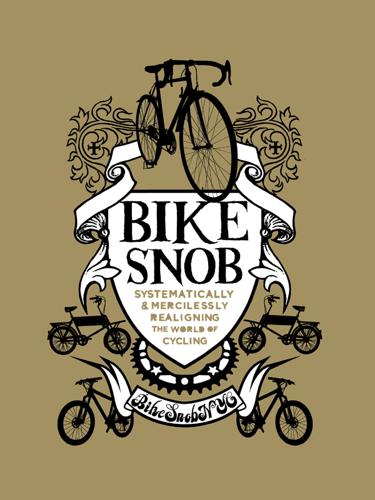
Bike Snob
by
BikeSnobNYC
Published 5 May 2010
This enables them to socialize and enjoy their bikes without having to ride them all that much. The fixed-gear freestyler takes his or her cues less from the above and more from “streetwear” and haute hip-hop fashion. They say things like “holla,” they “peep” things instead of looking at them, and they call colors “colorways.” It should also be noted that, unlike earlier Urban Cyclists (or in fact almost every other type of cyclist), the average age of the fixed-gear freestyler is decreasing instead of increasing. Because it is well suited to driveways and suburban cul-de-sacs, fixed-gear freestyling is becoming a teenage pursuit. Indeed, fixed-gear freestyling is one of the fastest-growing cultures in the United States—as long as by “culture” you mean “sneaker market.”
…
Use Brakes Of course, seeing stuff is only half the battle. You also need to be able to avoid the stuff, or else simply to stop your bicycle before you get to the stuff in the first place. Yes, you can stop a fixed-gear bicycle with just your legs…eventually. But you can stop a fixed-gear bicycle with brakes much, much more quickly. Believe it or not, a fixed-gear with a brake or two is still a fixed-gear. The awkward stopping is not a requirement. Do you ride in crotchless pants? Probably not. Then why ride a brakeless bike? Listen When you’re riding in a group of cyclists, it’s pretty easy to crash, since you’re really only as safe as the worst rider.
…
Or he may forsake the mailman shants for some Lieutenant Dangle short-shorts or some Daisy Dukes.) In a way, the fixed-gear bicycle was the lightning bolt that struck the primordial soup of trendiness from which the latest wave of hipsterdom and gentrification evolved. Naturally, the fixed-gear bicycle soon became an indispensable part of hipster culture, and because hipsters began to rely upon them more and more in order to travel within their rapidly-expanding territories the bicycle in turn became even trendier and more coveted. The fixed-gear bicycle is as vital to the hipster as the horse is to the cowboy, or the tractor is to the farmer, or the boat is to the fisherman.
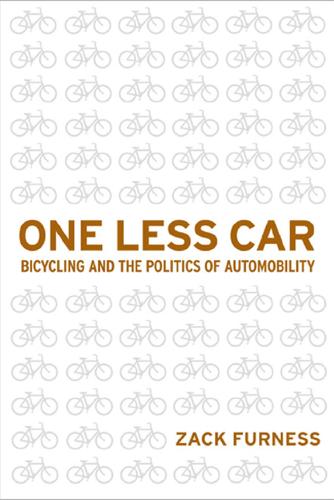
One Less Car: Bicycling and the Politics of Automobility
by
Zack Furness
and
Zachary Mooradian Furness
Published 28 Mar 2010
For example, most bicycling advocates tend to see the fixed-gear phenomenon as a mixed blessing where, on one hand, they are weary of biking becoming just another fad that results in people “hanging their bike next to the roller blades they don’t use anymore,” and at the same time, they recognize how it can work in precisely the opposite manner.114 Eric Boerer, for instance, likens fixed-gear bikes to a “gateway drug” that turns many people onto other facets of bicycling and bike advocacy, just as fixed-gear rider Tony Fast concludes a rant against fixed-gear biking fashionistas with the assertion “if fashion gets people riding bikes then more power to it.”115 indeed, the fact that bicycling is even remotely considered fashionable and hip in certain U.S. cities is hardly an insignificant achievement given the profound challenges facing those who simply attempt to alter, let alone transform, the dominant cultural norms and everyday habits associated with transportation.
…
The slogan “Give Hipsters a Brake” (with an image of a bike brake) comes from a U.S. T-shirt design circa 2006–2007. For one of the many articles that offer an overview of fixed-gear bikes and biking, see Jeff Guerrero, “The next page: The limberness of the Fixed Gear Mind,” Pittsburgh Post-Gazette, September 9, 2007. For more on fixed-gear terminology, see Buffalo Bill, “Guardian Style Journalist ‘Discovers’ Fixies,” Moving Target Zine, September 3, 2008, available at http://www. movingtargetzine.com/article/guardian-style-journalist-discovers-fixies. Sheldon Brown, “Fixed Gear Bicycles for the road,” Sheldon Brown’s Bicycle Technical Information, available at http://www.sheldonbrown.com/fixed.html; Guerrero, “The next page: The limberness of the Fixed Gear Mind”; Greg Goode, “no Brakes . . .
…
Sheldon Brown, “Fixed Gear Bicycles for the road,” Sheldon Brown’s Bicycle Technical Information, available at http://www.sheldonbrown.com/fixed.html; Guerrero, “The next page: The limberness of the Fixed Gear Mind”; Greg Goode, “no Brakes . . . Or, Zen on Wheels,” Nonduality Salon Magazine, no. 1, September 1, 2000, available at http://www.nonduality.com/900gg.htm; William Blaze, “visceral aesthetics (Fixed Gear),” Abstract Dynamics, May 27, 2005, available at http://www.abstractdynamics.org/ archives/2005/05/27/visceral_aesthetics_fixed_gear.html. Erin Feher and Sonia Beauchamp, “Fixie or Forget it,” [X]press (October 2005), available at http://xpress.sfsu.edu/archives/magazine/004697.html. For a more even handed assessment of fixed gears, see Gabe Meline, “pedal to the Mettle,” North Bay Bohemian, September 15–21, 2004.
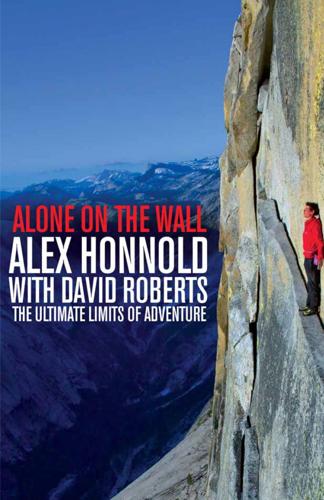
Alone on the Wall: Alex Honnold and the Ultimate Limits of Adventure
by
Alex Honnold
and
David Roberts
Published 2 Nov 2015
The distinctions may seem arcane to nonclimbers, but they’re huge for those of us who go after big walls. Rope soloing is a process in which you belay yourself, usually by tying one end of the rope to an anchor, the other end to your harness, then leading more or less conventionally, placing pro or clipping fixed gear as you go. Instead of a belayer to catch your fall, you minimize the potential plunge by using one of several different devices. I generally use a grigri, the same autolocking belay device that I use to catch a friend at the sport crag or gym, though in this case I’m using it to catch myself. The trouble with rope soloing is that it’s extremely tedious.
…
I carried two daisies, so that I could alternate clips without ever interrupting the security of my static connection to good pro. On the very hardest aid pitches on the Nose, like the crux of a big overhang called the Great Roof (rated 5.13d), I used the daisies to hang from either cams I placed or fixed gear—some of it pretty old and nearly worthless. During most of the climb on the Nose, however—all but the very hardest passages—I was truly free soloing. The transition from daisy soloing to free is scary. I have to constantly remind myself, Now I’m safe. Now I’m not. It’s tough mentally. But you never forget, never think you’re clipped to pro when you’re actually attached to nothing.
…
I could see that the rope was fixed to the bolt on Sickle and refixed to a half-dozen pieces along its way down, so I happily hand-over-handed up and saved myself a lot of ropework. I figured that something useful like that makes up for all the times that you go up on a pitch and discover that someone has cleaned all the fixed gear or ripped a crucial piece that’s supposed to be left in place, either by falling and pulling it out or by deliberately scavenging it. And then sometimes you get lucky and find a rope left in place! Dolt Tower, ten pitches up, was my first real stop. It was time to eat and drink again, and I checked my timer.
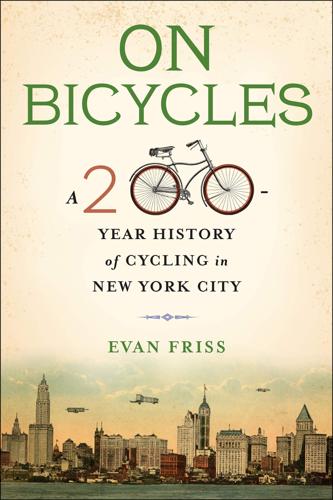
On Bicycles: A 200-Year History of Cycling in New York City
by
Evan Friss
Published 6 May 2019
Messengers, on the other hand, preferred fixed-gear bicycles. With only a single gear fixed to the rear wheel, these bicycles were light and easy to maintain but difficult to ride, since pedals spun in tandem with the wheels, making coasting impossible. Often they had no brakes. Track bikes, a special kind of fixed-gear designed for use on velodromes but popular among messengers, never had brakes. In order to stop, riders locked their legs, exerting backward pressure on the pedals, forcing the bike to skid. Whether on a track bike or an ordinary fixed-gear, messengers who had “an almost spiritual relationship with their bicycles” preferred the smooth handling and more intimate relationship between rider and machine.
…
Just as a novice rider is first able to balance only a few seconds without falling, then a minute, then two, then three … New Yorkers rode for longer and longer with each revival. Ever since the 1870s, whether velocipedes, high-wheelers with their almost comically oversized front wheels, safety bicycles, tricycles, cruisers, ten-speeds, fixed-gears, BMX bikes, Citi Bikes, or e-bikes, there have always been bicycles in New York. The question about where they belonged never disappeared either. New Yorkers remained divided on the issue because they remained divided on the nature of cyclists and cycling. In the nineteenth century, carriage drivers may well have frequented the six-day-long bicycle races at Madison Square Garden, but they objected to cyclists “scorching” through Central Park.
…
Whether on a track bike or an ordinary fixed-gear, messengers who had “an almost spiritual relationship with their bicycles” preferred the smooth handling and more intimate relationship between rider and machine. These simpler, leaner bicycles felt like an extension of the cyclist. Plus, not everyone was capable of riding them. Mastering a fixed-gear was “like the black belt of bicycle riding,” one messenger described in 1986.53 The challenge of being a messenger was certainly part of the appeal. The “romance of danger,” as one anthropologist cum bike messenger observed, lured a certain kind of person, one who preferred adventure and independence to the tired routine and hierarchies that dominated the culture of the offices where couriers picked up and dropped off deliveries.54 While some New Yorkers loathed messengers for their recklessness, others worshiped them.

Invisible Influence: The Hidden Forces that Shape Behavior
by
Jonah Berger
Published 13 Jun 2016
But look at what most hipsters are riding and you’ll notice they have only one gear. Some are even riding fixies, or fixed-gear bikes where the motion of the pedals is fixed to the motion of the back wheel. When the rear wheel turns, the pedals turn with it, meaning that the rider can’t stop pedaling if they want to move forward. And there are no brakes. The only way to brake is by resisting the rotation of the pedals by using your legs to slow the bike’s motion down. Why would someone who lives in the second hilliest city in the world buy a bike with no brakes? By reducing, or removing, functional benefits, fixed-gear bikes and watches that don’t tell time become great signals of identity.
…
When the watch face is parallel to the ground and kept perfectly still, a magnet will pull the bearing to the correct position on the watch, revealing the time. Otherwise it’s anyone’s guess. Watches that don’t tell time are just one example of afunctional products, or items that directly violate their functional purpose. Single-speed or fixed-gear bicycles are another. San Francisco is a great biking city. There are lots of hills, but the weather is good and bike lanes are prevalent. There are bikers everywhere. People biking to work, people biking for exercise, and people biking to get wherever they happen to be going. Take a closer look at some of the bikes, though, and you’ll notice something surprising: Many have only one gear.
…
See Sports/athletics Audience effects, 189n Autokinetic effect, 21 Automobiles, 2–4, 15, 16 differentiation of, 83 introduction of, 182–83 logos on, 133 optimal distinction in, 177–79 signals conveyed by, 107–8, 122, 123, 144 similarity of, 156–57 social class and preferences in, 86–87, 90–91 Avis, 220 Babies mimicry in, 33 naming (see Names) perceived differences in, 16, 85 Baby One More Time (album), 43 Babysitters, ice cream preferences in, 103–4 Baseball, 204 Baselworld, 123–24 Basketball, 17, 204, 207–8, 214 Beckham, David, 127 Beer preferences, 71–72, 73 Beetle (Volkswagen), 157 Berra, Yogi, 73 Bicycles, single-speed or fixed gear, 125 Binge drinking, discouraging, 140–41 Birth order, 16, 64–70 Blockbusters, 42–55 music website experiment, 46–49, 52–53 parking preference experiment, 49–52, 53 quality and, 53–54 BMWs, 2–4, 83, 180 Bon Appétit, 94 Boredom, 167–69 Bottega Veneta, 134, 135 Bradlow, Eric, 150 Branding.
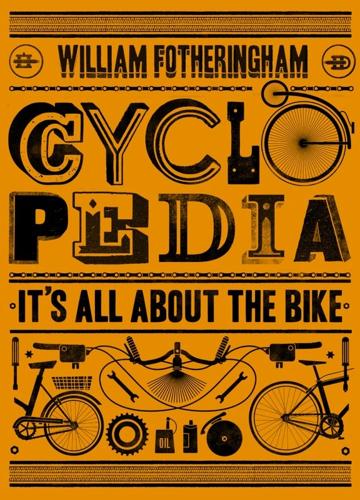
Cyclopedia
by
William Fotheringham
Published 22 Sep 2011
• Allowing space when riding down a line of parked cars for the one driver in a hundred who hasn’t seen you coming and opens his door on your fast-moving knee. DERAILLEUR see GEARS DERNY Small motorbike with a gas tank across the handlebars used in TRACK RACING. Dernys have a 98 cc two-stroke engine backed up by the driver pedaling a large fixed gear, typically 70 × 11, giving smooth acceleration and deceleration. They have to be bump-started, and their top speed is about 50 mph. Dernys take the field up to speed in the opening laps of international KEIRIN races, are used to pace riders in MOTORPACE races at track meetings, and can be seen making the pace in training and warming up.
…
MountainBikes ceased trading in 1983, and Fisher then formed his own company, which is now owned by Trek and still makes bikes bearing his name. FIXED-WHEEL Curiously, even as cycle component makers pushed the number of gears available on most road-racing bikes into the 20s and 30s, London and some other major cities worldwide were hit by a new craze: fixed-gear bikes that were based on the stripped-down models used by cycle COURIERS and by HILL CLIMB specialists. Top London shop Condor Cycles, which produced the first new-era “fixie” in 2002, estimated that it had sold several thousand of the bikes in their first seven years. Relatively few were visible on the streets, implying that they were retained for weekend use or simply to be admired.
…
The assistant gravedigger there, Maurice Vernaldé, told Woodland that Garin admitted cheating in the 1904 Tour: “He used to laugh and say ‘Well I was young . . .’ Maybe at the time he said he didn’t but when he got older and it didn’t matter so much.” GEARS Although experimentation with multiple gears began in the days of the velocipede, the first bicycles used single fixed gears, in which the transmission is directly linked to the driving wheel, with no possibility of freewheeling. On long descents riding a high-wheeler, the rider simply took his feet off the pedals, put them on pegs sticking out of the frame, and hoped for the best. Uphill, he or she would walk. The first hub gears—which use different sized cogs within the hub to create different ratios—appeared in 1891.
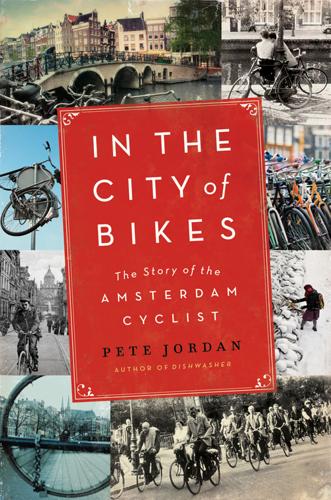
In the City of Bikes: The Story of the Amsterdam Cyclist
by
Pete Jordan
Published 20 Aug 2012
Ahead of the larger commemoration, municipal workers had swept Dam Square clean of parked bicycles, May 4 being the one day of the year the square isn’t littered with bikes. But here, at the far smaller gathering, in rows of threes and fours, dozens of bikes leaned against the small hotel beside us. Most of them were fixed-gear bikes—a peculiar sight, since fixies aren’t anywhere near as popular in Amsterdam as they are in so many American cities. Most of those gathered were bike messengers, another population that, surprisingly, there are fewer of in Amsterdam than in many American cities, given that the era when the city teemed with butcher’s boys and baker’s boys on bikes had long since passed.
…
Upon our arrival in the Danish capital, one difference between the two cities immediately became clear. Outside Copenhagen’s Central Station, hundreds of bikes were fastened by locks that looked—to someone from Amsterdam—shockingly vulnerable. They were so skinny and flimsy, they seemed like they could be snipped open using little more than fingernail clippers. Many bikes—even racing bikes, fixed-gear bikes, cargo bikes—were secured by nothing but a single toy-like lock. And, curiously, only the front wheels of many bikes were locked, which left the rest of the bike ripe for the taking. By my count, only one in 30 bikes was secured by two locks. When I found not one but two bikes whose locks still had their keys in them, I was baffled.
…
The hope is that I’ll see one with “AJJ,” “AJJ II” or “AJJ III” written on it. (Though the Sharpie ink has certainly long since faded, the search goes on.) I still attend the annual May Fourth Remembrance Day services at the Annick van Hardeveld monument (and seem to remain the only person in attendance with a bike that’s not a fixed-gear). I still swing by the Grimburgwal bridge where I try to show my son the zwijntjesjagers selling stolen bikes. (The bridge’s heyday has clearly passed, though; I’ve yet to point out a single zwijntjesjager to Ferris.) I still am extremely vigilant when securing my bike, always double-locking it even when I’m just running into a newsstand for a newspaper or a candy bar.
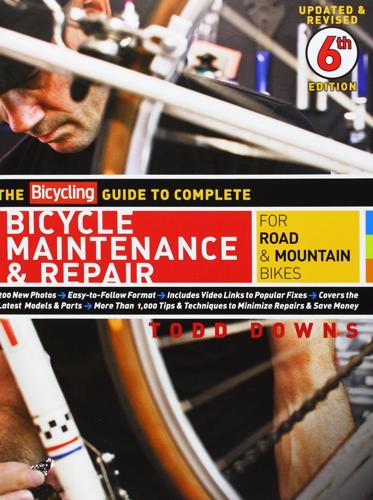
The Bicycling Guide to Complete Bicycle Maintenance and Repair: For Road and Mountain Bikes
by
Todd Downs
Published 16 Mar 2005
Safety bicycles most resembled the bicycles of today, except that they had a fixed drivetrain, which meant that whenever the rear wheel was in motion, so were the crank and pedals. This “fixed gear” system allowed you to contribute the strength in your legs to the braking process by resisting the forward movement of the pedals. Fixed gear drive trains still can be found today on track bikes (one-speed, brakeless road bikes raced on an oval track called a velodrome) because of the added control that it offers. With the exception of track bikes and “fixies” (vintage road bikes converted to fixed-gear, popular among urban commuters these days), modern bikes have a ratcheting mechanism and cogs that connect the rear hub, via the chain, to the pedals but allow you to coast when you stop pedaling.
…
Gear Chart for 700C Wheels page 370 Gear Chart for 26-Inch Wheels page 372 Gear Chart for 29-Inch Wheels page 374 Gear Chart for 650B Wheels page 376 Gear Chart for 700C Wheels Gear Chart for 26-Inch Wheels Gear Chart for 29-Inch Wheels Gear Chart for 650B Wheels Glossary A Adjustable cup: the left-hand cup in a nonsealed bottom bracket, used in adjusting the bottom bracket bearings; removed during bottom bracket overhaul Aero levers: road bike brake levers employing hidden cables that travel out the back of the lever body and under the handlebar tape AheadSet: former trade name for threadless headsets manufactured by DiaCompe and Cane Creek Allen wrench: a specific brand of hex key All-mountain bike: a mountain bike designed to balance climbing and descending abilities with slightly more emphasis on descending prowess; features dual-suspension with 4 to 6 inches of travel All-terrain bike (ATB): a term sometimes used for a mountain bike Axle: a stationary rod around which a body rotates, such as a hub axle B Bar-ends: short, forward-reaching extensions that fit on the ends of a mountain bike handlebar to add another riding position B/B or BB: common shorthand for bottom bracket Beach cruiser: a bike that is designed for casual and comfortable road riding and features a relaxed frame, fat 26-inch tires, a wide saddle, a wide handlebar, and rubber pedals Binder bolt: the bolt used to fasten a stem inside a steerer tube, a seatpost inside a seat tube, or a handlebar or fork steerer in a stem BMX (Bicycle Moto Cross): a type of racing done on a closed dirt track over obstacles, usually on 20- or 24-inch-wheel bikes with one gear Bottom bracket: the cylindrical part of a bicycle frame that holds the crankset axle, two sets of ball bearings, a fixed cup, and an adjustable cup Brake pad: (1) a block of hard rubber, urethane, or cork material fastened to the end of a rim-brake caliper; it presses against the wheel rim when the brakes are applied, also known as a brake block; (2) a thin block of resin, organic, or metallic-compound material that is clamped onto the disc (of a disc brake system) by the caliper Brake shoe: the metal part that holds a brake pad and is bolted to the end of a brake caliper Braze-ons: parts for mounting shift levers, derailleurs, water bottle cages, and racks, which are fastened to a bicycle frame through a type of soldering process known as brazing Brinelling: a type of wear in bearing components characterized by a series of dents in the races or cups Bushing: a sleeve that fits between two parts to act as a bearing, often found in suspension systems Butted tubing: tubing of varied diameter or wall thickness, used to maintain or increase strength at the ends while reducing weight in the middle, where less strength is required C Cable end: a small aluminum cap installed on the ends of brake and shift cables to keep them from fraying; also known as a cable crimp Cage: on a front derailleur, a pair of parallel plates that push the chain from side to side; on a rear derailleur, a set of plates in which pulleys are mounted to hold and guide the chain from cog to cog Calipers: (1) brake arms that reach around the sides of a wheel to press brake pads against the wheel rim; (2) the fixed portion of a disc brake system that houses the pistons and brake pads Cantilever brakes: rim brakes with pivoting arms mounted on fork blades or seatstays Capital: the assembly of parts that clamps the rails of a saddle to the top of a seatpost or integrated seatmast Cassette: a cluster of rear cogs that fits onto a cassette hub Cassette hub: a type of rear hub that has a built-in freewheel mechanism Chain: the series of links pinned together that extends from the chainring to the cogs on the back wheel and allows you to propel the bike by pedaling Chainring: a sprocket attached to the right crankarm to drive the chain Chainring nut spanner: a special tool used to loosen the slotted chainring bolts (the ones behind the inner ring) that fasten a chainring to a crankarm Chainstays: the two tubes of a bicycle frame that run from the bottom bracket to the rear dropouts Chainwheel: see Chainring Chain whip: a tool consisting of a metal bar and two sections of chain, used to hold a cassette steady while the lockring is removed Chrome-moly: a type of high-quality steel tubing; also known as chrome molybdenum or cro-mo Circuit: a road cycling race course in the form of a loop Circuit race: a road race that takes place on a long circuit as defined by the UCI and USA Cycling, measuring at least 8 kilometers (5 miles) per lap Clincher tire: a tire with edges that hook under the curved-in edge of a rim Clipless pedals: pedals that use a releasable mechanism like that of a ski binding to lock onto cleated shoes; these pedals do not use toeclips or toe straps Coaster brake: a foot-operated brake built into the rear hub; normally found on one-speed kids' bikes and cruisers Cog: a sprocket that is attached directly to the rear hub on a single-speed bike or mounted as part of a cassette on a multispeed bike Cogset: a cluster of sprockets that fit onto a cassette hub or freewheel body Cone: a bearing race that curves to the inside of a circle of ball bearings and works in conjunction with a cup Corncob: a term used to describe a cluster of cogs on a racing cassette because of the small variation in number of teeth on adjacent cogs Cottered crankset: a crankset in which the crankarms are fastened to the axle by means of threaded cotters and nuts Cotterless crankset: a crankset in which the crankarms are fastened to the axle by means of a precision-fit taper and nuts or bolts (instead of cotters) Crankarm: a part, one end of which is attached to the bottom bracket axle and the other of which holds a pedal that, through its forward rotation, provides the leverage needed to power the bicycle Crankarm bolt: the bolt that holds the crankarm onto the end of the axle in a cotterless crankset Crankset: the bottom bracket, spindle, two crankarms, and one or more chainrings of a bike Criterium: a form of road cycling competition that takes place on a short circuit; as defined by the UCI and USA Cycling, criterium courses usually measure between 1 and 3 kilometers (0.6 and 1.8 miles) per lap but may range from 0.8 to 5 kilometers (0.5 to 3 miles) per lap; the duration of a criterium may be measured in time, ranging from 30 to 90 minutes, or in distance, ranging from 30 to 100 kilometers (19 to 62 miles) Cross-country bike: a mountain bike suited to racing or general off-road riding on varied terrain Cross-country race: a form of mountain bike competition, as defined by the UCI and USA Cycling, that takes place on an off-road circuit that may be comprised of forest roads, forest or field trails, unpaved dirt or gravel roads, or any combination of these Crossover cable: see Straddle cable Cruiser: see Beach cruiser C-spanner: a wrench with a C-shaped end that is used to loosen the lockring on certain bottom brackets and headsets Cyclocross bike: a bicycle designed specifically for cyclocross racing, an event where lightweight bicycles that resemble road bikes are raced on an offroad course that includes sections where the rider must dismount and run with the bike; features include specific geometry, drop handlebars, knobby tires, and cantilever brakes D Damping: the process of controlling suspension action, without which a suspended fork would bounce like a pogo stick Derailleur: a mechanism mounted to the seat tube or derailleur hanger of a frame that pushes the chain off one sprocket and onto another Derailleur hanger: a threaded metal piece that extends below the right rear dropout and is used as a mount for the rear derailleur Diamond frame: the traditional bicycle frame, the principal parts of which form a diamond shape Direct-pull cantilever: see Linear-pull cantilever Disc brake: a braking system that uses a small caliper mounted near a front or rear dropout (usually on the left side) that clamps onto a stainless steel disc attached to the hub to generate braking force Dish: on a multispeed bike with a cassette or freewheel, the rear wheel's hub shell is more steeply angled than the left-side spokes, so at first glance the rim looks offset, much like the way the edge of a dinner plate is offset from the plate's base; hence the term “dish” Double Tap: SRAM's name for their shifting brake levers Downhill bike: a bike designed for racing down mountains; features include long-travel (7 inches or more) dual-suspension frame, powerful disc brakes with 7- or 8-inch diameter discs, and in many cases a single chainring with special chain guides and retention systems Downhill race: a mountain bike time trial, as defined by the UCI and USA Cycling, that takes place on a steeply descending course comprised of trail and/or dirt or gravel road, sometimes with jumps, drops, or other technical trail features Down tube: the frame tube running from the headset to the bottom bracket; one part of the main triangle on a bicycle frame Down-tube shift levers: shift levers that are mounted to the down tube of the bike Drafting: tucking in closely behind another rider so he or she will break the wind, saving you energy Drivetrain: the derailleurs, chain, cogset, and crankset of a bike Drop: (1) the vertical distance from the horizontal line connecting the two wheel axles to the horizontal centerline of the bottom bracket; one way of determining the location of the bottom bracket in relation to the rest of the bicycle frame; sometimes referred to as B/B drop or bottom bracket drop; (2) the vertical distance from a horizontal line across the top of the saddle to the horizontal centerline of the handlebar; one of the measurements of bike fit Dropout: slots in the frame and fork into which the rear and front wheel axles fit Drops: the curved portions below the brake lever bodies of a road-type handlebar Dual-crown fork: a type of suspension fork that has one crown above and another below the head tube, which increase stiffness; sometimes called double-triple clamp forks Dual slalom: a mountain bike competition as defined by the UCI and USA Cycling in which two riders race down similar but separate downhill courses, sometimes with banked turns, jumps, and other technical features Dual-suspension bike: a bike with front and rear suspension; casually referred to as a “dualie” or “fully” Dustcap: a metal or plastic cap that fits into a hub shell to keep contaminants out of hub bearings; or a metal or plastic end cover to prevent contamination of the bearings on the outside face of a pedal or for the fixing bolt of a crankarm E Elastomer: a material, usually urethane, once used in suspension systems to provide shock absorption End plugs: the caps that fit onto or into the ends of the handlebars Epic: a remarkable mountain bike ride for its length, elevation gain, and/or spectacular views Ergopower levers: the name for Campagnolo's shifting brake levers F Face: to shave the outer edges of a bottom bracket shell or the upper and lower ends of a head tube to make them parallel with one another and square to the tube's centerline so that, when the bottom bracket or headset is installed, the bearings will run as smoothly as possible Ferrules: removable cylindrical metal or plastic caps used to reinforce the ends of cable housing Fixed cup: the right-hand cup in a loose-ball bottom bracket Fixed gear (wheel): as found on track-racing and some urban transportation bikes, a hub-and-cog combination that's designed in such a way that one must always pedal; it's impossible to coast Fixing bolt: a bolt used to hold a crankarm on the spindle of a crankset Flange: the part of a hub shell to which spokes are attached Fork: the part of the frame that fits inside the head tube and holds the front wheel; a term also sometimes applied to the part of the frame where chainstays and seatstays join to hold the rear axle Fork blades: the tubes of a fork that extend down from the crown and end with the dropouts that hold the front wheel Fork crown: the point where the fork blades are joined with the steerer tube Fork rake: the shortest distance between the front axle and an imaginary line extending through the head tube down toward the ground Fork tips: the slotted tips of the fork blades into which the front wheel axle fits; also called dropouts Four cross (4X): see Mountain cross Freeride bike: a type of mountain bike designed to ride the most technical and punishing of downhill trails; features include long-travel (7 to 8 inches) dual-suspension and components manufactured for ultimate strength Freewheel: a removable component on the rear hub that carries gear cogs on the outside and contains a ratcheting mechanism inside that provides the connection to the wheel for pedaling while also allowing coasting; sometimes used to refer to the ratcheting mechanism inside a cassette Friction shifters: conventional (nonindex) levers that retain their position through the use of friction washers Front fork: see Fork Front triangle: not really a triangle but a quadrilateral with one short side, it is the section of a bicycle frame that consists of the head tube, top tube, seat tube, and down tube Full-suspension bike: see Dual-suspension bike G Gear: one position on a drivetrain; for example, being on the largest chainring and smallest rear cog is the largest gear Gooseneck: slang for a quill-style stem Granny: slang for the smallest chainring on a triplechainring crankset Grips: the rubber or foam sleeves that fit on the ends of upright handlebars; you grip them when riding Guide pulley: see Jockey pulley H Headset: the combination of cups, cones, and ball bearings that creates the bearing mechanism that allows the fork column to rotate inside the head tube so you can steer Head tube: the shortest tube in the main triangle; the one in which the fork's steerer tube rotates Hex key: a small, often L-shaped hexagonal wrench that fits inside the head of a bolt or screw; sometimes referred to as an Allen key or Allen wrench Housing: the plastic-covered tubing inside which the cables run Hub: the center of a wheel, consisting of a shell to which spokes attach and containing an axle along with two sets of bearings, bearing cones, lockwashers, locknuts, and parts for attaching the wheel to the frame Hub brake: any type of brake (disc, drum, or coaster) that operates through the wheel hub rather than the rim Hydraulic brake: a brake relying on a sealed fluid system instead of a cable for operation I Idler pulley: the pulley in a rear derailleur that stays farthest from the cassette cogs and keeps tension on the chain; sometimes called the tension pulley IMBA (International Mountain Bicycling Association): an organization that protects mountain bike trails Index shifters: levers that “click” into distinct positions that correspond to certain cassette cogs and don't require fine-tuning after each shift Integrated seatmast: a feature of a frame that does not use a traditional seatpost; instead, the seat tube is extended up past the top tube and is fitted with a capital that holds the saddle; some integrated seatmasts must be cut to suit the rider's leg length, while others utilize capitals of different lengths to accommodate different leg lengths J Jockey pulley: the pulley in a rear derailleur that stays closest to the cogs and guides the chain from cog to cog during a gear shift; sometimes called the guide pulley K Knobby tires: heavy-duty tires with large rubber knobs spaced relatively far apart to provide traction on off-road terrain L Left-hand threading: threading that's the opposite of regular threading, meaning you must turn left to tighten and right to loosen; always found on the left pedal; also known as reverse threading Linear-pull cantilever: a type of long-armed cantilever brake used mostly on mountain bikes from the 1990s; usually referred to as a V-Brake because of the popularity of Shimano's so-named linearpull cantilever models Linking cable: see Straddle cable Loaded tourer: a bicycle with structural strength, geometry, and equipment that is designed to allow a cyclist to travel with a full load of gear Locknut: a nut on a hub axle that is tightened against an axle cone to maintain the bearing adjustment; the locknut is also a hub's point of contact with the inside surface of a dropout Lockring: (1) the notched ring that fits on the left side of some bottom brackets and prevents the adjustable cup from turning; (2) the left-hand-threaded, notched ring that prevents the cog from coming loose on a fixed gear wheel Lockwasher: a washer with a small metal tab to prevent it from turning, such as the washer beneath the locknut on a threaded headset or between the locknut and cone on some older hubs Loose ball bearings: bearings inside a component that are not held in a metal or plastic retainer Lug: an external metal sleeve that holds two or more tubes together at the joints of a frame M Main triangle: see Front triangle Marathon: a long-distance cross-country mountain bike race; as defined by the UCI and USA Cycling, a marathon typically ranges in length between 60 and 100 kilometers (37 and 62 miles) Marathon bike: a mountain bike for cross-country endurance races; generally lightweight and often with around 4 inches of suspension travel to balance performance and long-ride comfort Master link: a special link on a bicycle chain that can be opened by flexing a plate, removing a screw, or some other means besides driving out a pin Mixte frame: a frame that replaces the top tube with twin lateral tubes that run all the way from the head tube back to the rear dropouts Mountain bike: a bicycle with an upright handlebar, sturdy fat tires, and wide-range gearing designed for off-road use Mountain cross: a mountain bike competition, as defined by the UCI and USA Cycling, in which four riders at a time race down a prepared downhill track with banked turns, jumps, and other technical features; also called four cross or 4X N Nipple: a small metal piece that fits through a wheel rim and is threaded inside to receive the end of a spoke Noodle: the L-shaped tubing piece found on the side of linear-pull cantilevers P Panniers: luggage bags used in pairs and fastened alongside one or both wheels of a bike Pin spanner: a wrench with pins on forked ends that is used to turn certain adjustable cups on some bottom brackets Pivot bolt: a bolt on which the arms of caliper brakes pivot and which also serves as the means for mounting the brakes on the bike frame Plain-gauge tubing: tubing whose thickness and diameter remain constant over its entire length; aka straight-gauge tubing Potato chipped wheel: a wheel that's been bent so severely that it curls sideways to resemble a potato chip Preload: an important suspension adjustment that usually involves modifying air pressure or adjusting the spring to ensure that the suspension responds appropriately to the rider's weight Presta valve: a bicycle tube valve with a stem that has a small nut on top that must be loosened during inflation, instead of a spring such as is found on a Schrader valve Q Quick link: a special connecting link that allows derailleur-type chains to be disassembled and reassembled without the use of tools Quick release: a cam-lever mechanism used to rapidly tighten or loosen a wheel on a bike frame or a seatpost in a seat tube Quick-release skewer: a thin rod that runs through the center of a wheel axle; a cam lever is attached to one end, and the other end is threaded to receive a nut Quill: the part of a stem that fits inside the fork's steerer tube; quilled stems are used with threaded-type forks and headsets R Races: curved metal surfaces of cups and cones that ball bearings contact as they roll Rake: see Fork rake Rear triangle: a frame triangle formed by the chainstays, seatstays, and seat tube Recumbent: a bike that places the rider in a reclining feetfirst position Regular threading: the threading that's found on almost all bike parts; turn to the right to tighten and to the left to loosen Replaceable derailleur hanger: a type of derailleur hanger that can be easily replaced using hand tools if it gets damaged Retainer: a metal or plastic ring that holds the bearings in place in a headset or bottom bracket Reverse threading: see Left-hand threading Rim: the metal hoop of a wheel that holds the tire, tube, and outer ends of the spokes Rim brake: any type of brake that slows or stops a wheel by pressing its pads against the sides of the wheel rim Riser bar: a mountain bike handlebar that sweeps upward so the ends (where the grips fit) are higher than the center (where the stem clamps) Road bike: a lightweight, multispeed bicycle characterized by a drop handlebar Road cycling: (1) riding a road bike; (2) forms of competition that involve groups of cyclists racing on road bikes, including road races, circuit races, and criteriums Road race: a form of bicycle competition involving cyclists on road bikes; as defined by the UCI and USA Cycling, road races take place over a long course that can be in the form of point to point, out and back, laps of a circuit, or a combination of these, and typically range in length from 80 to 200 kilometers (50 to 124 miles) Rollers: a stationary training device with a boxlike frame and three rotating cylinders (one for the front wheel and two for the rear wheel) on which the bicycle is balanced and ridden S Saddle: the seat on a bicycle Schrader valve: a tire valve similar to the type found on automobile tires Sealed bearings: bearings fastened in sealed containers to keep out contaminants Seamed tubing: tubing made from metal strip stock that is curved until its edges meet, then welded together Seamless tubing: tubing made from blocks of metal that are pierced and drawn into tube shape Seat cluster: the conjunction of top tube, seat tube, and seatstays near the top of the seat tube Seatmast: see Integrated seatmast Seatpost: the part to which the saddle clamps and which fits down inside the seat tube Seatstays: parallel tubes that run from the top of the seat tube back to the rear axle Seat tube: the tube that runs from the seat cluster to the bottom bracket Semislick tire: a type of mountain bike tire with limited tread; popular for not-too-technical courses because it rolls faster than a knobby tire Sew-up: see Tubular Shallow angles: angles that position frame tubes farther from vertical and closer to horizontal; also known as slack angles Skipping: a popping feeling in the drivetrain when you pedal hard; it occurs when a chain, cogset, and/or chainring is worn out Slack angles: see Shallow angles Solvent: a liquid used to cut grease and grime, such as when cleaning components or chains Spanner: another name for a wrench; applied to many bicycle tools Spider: the multi-armed piece to which the chain wheels are bolted; usually part of the right crankarm Spindle: a rod that rotates inside a body with a fixed orientation, such as a bottom bracket spindle or pedal spindle Spoke: one of several wires used to hold the hub in the center of a wheel rim and transfer the load from the perimeter of the wheel to the hub and onto the frame Sports tourer: a bicycle with structural strength, geometry, and components designed to make it a compromise between a bike suitable for racing and one suitable for loaded touring; good for general pleasure riding Sprocket: a disc bearing teeth for driving a chain; a general term that applies both to chainrings and to cassette cogs Stainless steel: a type of steel that will not rust; ideal for spokes Stationary trainer: a device to which you attach your bike so you can ride in place Steep angles: angles that position frame tubes nearer to vertical than do shallow angles Steerer tube: the tube that forms the top of the fork and rotates inside the head tube Stem: the part that fits into (threaded) or onto (threadless) the fork's steerer tube and holds the handlebar Step-through frame: a type of frame, found on some hybrid and city bikes, on which the top tube is replaced by a second down tube; this makes mounting and dismounting the bike easier but eliminates much of its structural strength STI: the name for Shimano's shifting brake levers Straddle cable: a short cable on cantilever and centerpull-type brakes, each end of which attaches to a brake arm and is pulled up at the center to activate the brakes Straddle hanger: a triangular metal piece used to connect the main brake cable with the straddle cable of a centerpull or cantilever brake Straight-gauge tubing: see Plain-gauge tubing Suspension: a system of spring and damper that isolates a rider from the shock transmitted through the bike while riding over small obstacles such as rocks, roots, and potholes; a generic term referring to all types of sprung fork and frame designs Swingarm: the movable rear end of a suspension bicycle T Taco'd wheel: see Potato chipped wheel Tandem: a bicycle that has seats, handlebars, and pedals for two or more riders, one behind the other Tap: to cut threads inside a tube or opening; also the name of the tool that does the cutting Threaded headset: a type of headset that fits to a fork with a threaded steerer tube; the threaded fitting is used to secure the fork and to adjust the headset bearing Threadless headset: a type of headset that fits on a fork with a threadless steerer tube; the headset parts and stem all fit to the outside of the fork steerer, and adjustment is made by compressing the assembly with a top cap before tightening the stem to secure everything Thread-locking compound: a liquid applied to threads to ensure that the part stays tight after it's attached Three-cross: a spoking pattern in which a spoke passes over two and under a third spoke before being attached to the rim Thumbshifter: a shifter designed to be operated with the thumbs, such as the Shimano Rapid Fire and SRAM Trigger models Toeclips and toe straps: a cagelike kit attached to pedals to keep your feet in the correct position (unnecessary on clipless pedals) Top tube: the horizontal tube that connects the seat tube with the head tube Tourist: a cyclist who takes excursions by bicycle, often carrying several panniers containing clothing and camping equipment Track bike: a type of bike used for racing on a bicycle track (velodrome); looks a lot like a road bike but features only one gear and has no brakes Trials: a type of mountain bike competition that tests riders' abilities to negotiate large obstacles such as boulders, logs, and parked cars; these competitions are judged on technical ability rather than speed Triple crank: a triple-chainring crankset designed to provide a wide range of gears Tubular: a type of tire that has a tube sewn inside the casing and is glued to the rim; also known as a sew-up Twist shifter: a type of shift lever that's twisted to shift the gears, such as GripShift models U U-brakes: heavy-duty centerpull mountain bike brakes that affix to frame posts UCI (Union Cycliste Internationale): the official international governing body for all disciplines of competitive cycling, including road, track, mountain bike, BMX, and cyclocross; recognized by the International Olympic Committee U-lock: a U-shaped lock; called D-locks in Britain Ultra-marathon: a cross-country mountain bike race defined by the UCI and USA Cycling to cover a distance greater than 100 kilometers (62 miles) Unicrown fork: a fork on which the blades curve in at the top and are welded to the steerer to form the fork crown Universal cable: a shift or brake cable that's designed to fit all types of levers; on each end is a different lead end, and you cut off the one you don't need USA Cycling: the official governing body for all disciplines of competitive cycling in the United States, including road, track, mountain bike, BMX, and cyclocross; recognized by the United States Olympic Committee and the Union Cycliste Internationale V V-Brake: Shimano's brand name for their model of linear-pull brake W Wheelbase: the distance between the front and rear axles Wind trainer: a training device consisting of a frame in which a bicycle is fastened for stationary riding and a fan that creates wind resistance to simulate actual road riding Z Zip-tie: a plastic strap that, when threaded through its end and pulled, tightens and stays tight to affix cables or number plates to a bicycle Resources 3T www.thenew3t.com Answer www.answerproducts.com Avid www.avidbike.com Barnett Bicycle Institute www.bbinstitute.com Bell Sports www.bellbikehelmets.com Bianchi www.bianchiusa.com Bike Friday www.bikefriday.com Bilenky Cycle Works www.bilenky.com BMC www.bmc.racing.com Bontrager www.bontrager.com Brooks www.brookssaddles.com CamelBak www.camelbak.com Campagnolo www.campagnolo.com Cane Creek www.canecreek.com Cannondale www.cannondale.com Cervélo www.cervelo.com Chris King Precision Components www.chrisking.com Cinelli www.cinelli-usa.com Colnago www.colnago.com Continental www.conti-online.com Crank Brothers www.crankbrothers.com Deda Elementi www.dedaelementi.com Diamondback www.diamondback.com DT Swiss www.dtswiss.com Easy Racers www.easyracers.com Edge Composites www.edgecomposites.com Ergon www.ergon-bike.com ESI www.esigrips.com Fizik www.fizik.com Focus USA www.focus-bikes.com Formula www.formulabrakeusa.com Fox Racing Shox www.foxracingshox.com Fuji www.fujibikes.com Fulcrum www.fulcrumwheels.com Gary Fisher Bicycles www.fisherbikes.com Giant www.giant-bicycle.com Giro Helmets www.giro.com GT www.gtbicycles.com Harris Cyclery www.harriscyclery.com Hayes Bicycle Group www.hayesbicycle.com Hope Technology www.hopetech.com Hutchinson www.hutchinsontires.com Independent Fabrication www.ifbikes.com Intense Bicycles www.intensecycles.com Intense Tires www.intensetires.com Jamis www.jamisbikes.com Kenda www.kendausa.com Kestrel www.kestrelbicycles.com KHS www.khsbicycles.com King Cage www.kingcage.com Kona Mountain Bikes www.konaworld.com Lezyne www.lezyne.com Litespeed Titanium Bicycles www.litespeed.com Look www.lookcycle.com Loose Screws www.loosescrews.com Lynskey Performance www.lynskeyperformance.com Magura www.magura.com Manitou www.manitoumtb.com Marin Mountain Bikes www.marinbikes.com Marzocchi www.marzocchi.com Maverick American www.maverickamerican.com Mavic www.mavic.com Maxxis www.maxxis.com Merlin www.merlinbike.com Michelin www.michelinbicycletire.com Montague USA www.montagueco.com NEMA www.nema-usa.com Niner www.ninerbikes.com Nokian www.suomityres.fi/ Norco Bicycles www.norco.com NoTubes www.notubes.com ODI www.odigrips.com Orbea www.orbea-usa.com Oury Grip www.ourygrips.com Oval Concepts www.ovalconcepts.com Panaracer www.panaracer.com Park Tool www.parktool.com Pearl Izumi www.pearlizumi.com Pedro's www.pedros.com Phil Wood www.philwood.com Pinarello www.gitabike.com Pivot Cycles www.pivotcycles.com Planet Bike www.planetbike.com Pro www.pro-bikegear.com Prologo www.prologotouch.com Quintana Roo www.rooworld.com Race Face www.raceface.com Raleigh USA www.raleighusa.com Rans www.rans.com Redline www.redlinebicycles.com Reynolds www.reynoldscomposites.com Ritchey www.ritcheylogic.com Rock Shox www.rockshox.com Rocky Mountain Bicycles www.bikes.com Rolf Prima www.rolfprima.com Salsa www.salsacycles.com San Marco www.sellesanmarco.com SantaCruz Bicycles www.santacruzmtb.com Santana Cycles www.santanatandem.com Schwalbe www.schwalbetires.com Schwinn www.schwinn.com Selle Italia www.selleitalia.com Serfas www.serfas.com Serotta www.serotta.com Seven Cycles www.sevencycles.com Shimano www.bike.shimano.com Specialized www.specialized.com Speedplay www.speedplay.com SRAM www.sram.com Sun-Ringlé www.sun-ringle.com Surly www.surlybikes.com Terry Precision www.terrybicycles.com Thomson www.lhthomson.com Time Sport www.time-sport.com Titec www.titec.com Titus www.titusti.com Topeak www.topeak.com Trek www.trekbikes.com TruVativ www.truvativ.com United Bicycle Institute www.bikeschool.com USA Cycling www.usacycling.org Ventana Mountain Bikes, USA www.ventanausa.com Vittoria www.vittoria.com Waterford Precision Cycles www.waterfordbikes.com Wheelsmith www.wheelsmith.com White Brothers Cycling www.whitebrotherscycling.com White Industries www.whiteind.com WTB www.wtb.com Zipp www.zipp.com Index Boldface references indicate photographs.
…
Gear Chart for 700C Wheels page 370 Gear Chart for 26-Inch Wheels page 372 Gear Chart for 29-Inch Wheels page 374 Gear Chart for 650B Wheels page 376 Gear Chart for 700C Wheels Gear Chart for 26-Inch Wheels Gear Chart for 29-Inch Wheels Gear Chart for 650B Wheels Glossary A Adjustable cup: the left-hand cup in a nonsealed bottom bracket, used in adjusting the bottom bracket bearings; removed during bottom bracket overhaul Aero levers: road bike brake levers employing hidden cables that travel out the back of the lever body and under the handlebar tape AheadSet: former trade name for threadless headsets manufactured by DiaCompe and Cane Creek Allen wrench: a specific brand of hex key All-mountain bike: a mountain bike designed to balance climbing and descending abilities with slightly more emphasis on descending prowess; features dual-suspension with 4 to 6 inches of travel All-terrain bike (ATB): a term sometimes used for a mountain bike Axle: a stationary rod around which a body rotates, such as a hub axle B Bar-ends: short, forward-reaching extensions that fit on the ends of a mountain bike handlebar to add another riding position B/B or BB: common shorthand for bottom bracket Beach cruiser: a bike that is designed for casual and comfortable road riding and features a relaxed frame, fat 26-inch tires, a wide saddle, a wide handlebar, and rubber pedals Binder bolt: the bolt used to fasten a stem inside a steerer tube, a seatpost inside a seat tube, or a handlebar or fork steerer in a stem BMX (Bicycle Moto Cross): a type of racing done on a closed dirt track over obstacles, usually on 20- or 24-inch-wheel bikes with one gear Bottom bracket: the cylindrical part of a bicycle frame that holds the crankset axle, two sets of ball bearings, a fixed cup, and an adjustable cup Brake pad: (1) a block of hard rubber, urethane, or cork material fastened to the end of a rim-brake caliper; it presses against the wheel rim when the brakes are applied, also known as a brake block; (2) a thin block of resin, organic, or metallic-compound material that is clamped onto the disc (of a disc brake system) by the caliper Brake shoe: the metal part that holds a brake pad and is bolted to the end of a brake caliper Braze-ons: parts for mounting shift levers, derailleurs, water bottle cages, and racks, which are fastened to a bicycle frame through a type of soldering process known as brazing Brinelling: a type of wear in bearing components characterized by a series of dents in the races or cups Bushing: a sleeve that fits between two parts to act as a bearing, often found in suspension systems Butted tubing: tubing of varied diameter or wall thickness, used to maintain or increase strength at the ends while reducing weight in the middle, where less strength is required C Cable end: a small aluminum cap installed on the ends of brake and shift cables to keep them from fraying; also known as a cable crimp Cage: on a front derailleur, a pair of parallel plates that push the chain from side to side; on a rear derailleur, a set of plates in which pulleys are mounted to hold and guide the chain from cog to cog Calipers: (1) brake arms that reach around the sides of a wheel to press brake pads against the wheel rim; (2) the fixed portion of a disc brake system that houses the pistons and brake pads Cantilever brakes: rim brakes with pivoting arms mounted on fork blades or seatstays Capital: the assembly of parts that clamps the rails of a saddle to the top of a seatpost or integrated seatmast Cassette: a cluster of rear cogs that fits onto a cassette hub Cassette hub: a type of rear hub that has a built-in freewheel mechanism Chain: the series of links pinned together that extends from the chainring to the cogs on the back wheel and allows you to propel the bike by pedaling Chainring: a sprocket attached to the right crankarm to drive the chain Chainring nut spanner: a special tool used to loosen the slotted chainring bolts (the ones behind the inner ring) that fasten a chainring to a crankarm Chainstays: the two tubes of a bicycle frame that run from the bottom bracket to the rear dropouts Chainwheel: see Chainring Chain whip: a tool consisting of a metal bar and two sections of chain, used to hold a cassette steady while the lockring is removed Chrome-moly: a type of high-quality steel tubing; also known as chrome molybdenum or cro-mo Circuit: a road cycling race course in the form of a loop Circuit race: a road race that takes place on a long circuit as defined by the UCI and USA Cycling, measuring at least 8 kilometers (5 miles) per lap Clincher tire: a tire with edges that hook under the curved-in edge of a rim Clipless pedals: pedals that use a releasable mechanism like that of a ski binding to lock onto cleated shoes; these pedals do not use toeclips or toe straps Coaster brake: a foot-operated brake built into the rear hub; normally found on one-speed kids' bikes and cruisers Cog: a sprocket that is attached directly to the rear hub on a single-speed bike or mounted as part of a cassette on a multispeed bike Cogset: a cluster of sprockets that fit onto a cassette hub or freewheel body Cone: a bearing race that curves to the inside of a circle of ball bearings and works in conjunction with a cup Corncob: a term used to describe a cluster of cogs on a racing cassette because of the small variation in number of teeth on adjacent cogs Cottered crankset: a crankset in which the crankarms are fastened to the axle by means of threaded cotters and nuts Cotterless crankset: a crankset in which the crankarms are fastened to the axle by means of a precision-fit taper and nuts or bolts (instead of cotters) Crankarm: a part, one end of which is attached to the bottom bracket axle and the other of which holds a pedal that, through its forward rotation, provides the leverage needed to power the bicycle Crankarm bolt: the bolt that holds the crankarm onto the end of the axle in a cotterless crankset Crankset: the bottom bracket, spindle, two crankarms, and one or more chainrings of a bike Criterium: a form of road cycling competition that takes place on a short circuit; as defined by the UCI and USA Cycling, criterium courses usually measure between 1 and 3 kilometers (0.6 and 1.8 miles) per lap but may range from 0.8 to 5 kilometers (0.5 to 3 miles) per lap; the duration of a criterium may be measured in time, ranging from 30 to 90 minutes, or in distance, ranging from 30 to 100 kilometers (19 to 62 miles) Cross-country bike: a mountain bike suited to racing or general off-road riding on varied terrain Cross-country race: a form of mountain bike competition, as defined by the UCI and USA Cycling, that takes place on an off-road circuit that may be comprised of forest roads, forest or field trails, unpaved dirt or gravel roads, or any combination of these Crossover cable: see Straddle cable Cruiser: see Beach cruiser C-spanner: a wrench with a C-shaped end that is used to loosen the lockring on certain bottom brackets and headsets Cyclocross bike: a bicycle designed specifically for cyclocross racing, an event where lightweight bicycles that resemble road bikes are raced on an offroad course that includes sections where the rider must dismount and run with the bike; features include specific geometry, drop handlebars, knobby tires, and cantilever brakes D Damping: the process of controlling suspension action, without which a suspended fork would bounce like a pogo stick Derailleur: a mechanism mounted to the seat tube or derailleur hanger of a frame that pushes the chain off one sprocket and onto another Derailleur hanger: a threaded metal piece that extends below the right rear dropout and is used as a mount for the rear derailleur Diamond frame: the traditional bicycle frame, the principal parts of which form a diamond shape Direct-pull cantilever: see Linear-pull cantilever Disc brake: a braking system that uses a small caliper mounted near a front or rear dropout (usually on the left side) that clamps onto a stainless steel disc attached to the hub to generate braking force Dish: on a multispeed bike with a cassette or freewheel, the rear wheel's hub shell is more steeply angled than the left-side spokes, so at first glance the rim looks offset, much like the way the edge of a dinner plate is offset from the plate's base; hence the term “dish” Double Tap: SRAM's name for their shifting brake levers Downhill bike: a bike designed for racing down mountains; features include long-travel (7 inches or more) dual-suspension frame, powerful disc brakes with 7- or 8-inch diameter discs, and in many cases a single chainring with special chain guides and retention systems Downhill race: a mountain bike time trial, as defined by the UCI and USA Cycling, that takes place on a steeply descending course comprised of trail and/or dirt or gravel road, sometimes with jumps, drops, or other technical trail features Down tube: the frame tube running from the headset to the bottom bracket; one part of the main triangle on a bicycle frame Down-tube shift levers: shift levers that are mounted to the down tube of the bike Drafting: tucking in closely behind another rider so he or she will break the wind, saving you energy Drivetrain: the derailleurs, chain, cogset, and crankset of a bike Drop: (1) the vertical distance from the horizontal line connecting the two wheel axles to the horizontal centerline of the bottom bracket; one way of determining the location of the bottom bracket in relation to the rest of the bicycle frame; sometimes referred to as B/B drop or bottom bracket drop; (2) the vertical distance from a horizontal line across the top of the saddle to the horizontal centerline of the handlebar; one of the measurements of bike fit Dropout: slots in the frame and fork into which the rear and front wheel axles fit Drops: the curved portions below the brake lever bodies of a road-type handlebar Dual-crown fork: a type of suspension fork that has one crown above and another below the head tube, which increase stiffness; sometimes called double-triple clamp forks Dual slalom: a mountain bike competition as defined by the UCI and USA Cycling in which two riders race down similar but separate downhill courses, sometimes with banked turns, jumps, and other technical features Dual-suspension bike: a bike with front and rear suspension; casually referred to as a “dualie” or “fully” Dustcap: a metal or plastic cap that fits into a hub shell to keep contaminants out of hub bearings; or a metal or plastic end cover to prevent contamination of the bearings on the outside face of a pedal or for the fixing bolt of a crankarm E Elastomer: a material, usually urethane, once used in suspension systems to provide shock absorption End plugs: the caps that fit onto or into the ends of the handlebars Epic: a remarkable mountain bike ride for its length, elevation gain, and/or spectacular views Ergopower levers: the name for Campagnolo's shifting brake levers F Face: to shave the outer edges of a bottom bracket shell or the upper and lower ends of a head tube to make them parallel with one another and square to the tube's centerline so that, when the bottom bracket or headset is installed, the bearings will run as smoothly as possible Ferrules: removable cylindrical metal or plastic caps used to reinforce the ends of cable housing Fixed cup: the right-hand cup in a loose-ball bottom bracket Fixed gear (wheel): as found on track-racing and some urban transportation bikes, a hub-and-cog combination that's designed in such a way that one must always pedal; it's impossible to coast Fixing bolt: a bolt used to hold a crankarm on the spindle of a crankset Flange: the part of a hub shell to which spokes are attached Fork: the part of the frame that fits inside the head tube and holds the front wheel; a term also sometimes applied to the part of the frame where chainstays and seatstays join to hold the rear axle Fork blades: the tubes of a fork that extend down from the crown and end with the dropouts that hold the front wheel Fork crown: the point where the fork blades are joined with the steerer tube Fork rake: the shortest distance between the front axle and an imaginary line extending through the head tube down toward the ground Fork tips: the slotted tips of the fork blades into which the front wheel axle fits; also called dropouts Four cross (4X): see Mountain cross Freeride bike: a type of mountain bike designed to ride the most technical and punishing of downhill trails; features include long-travel (7 to 8 inches) dual-suspension and components manufactured for ultimate strength Freewheel: a removable component on the rear hub that carries gear cogs on the outside and contains a ratcheting mechanism inside that provides the connection to the wheel for pedaling while also allowing coasting; sometimes used to refer to the ratcheting mechanism inside a cassette Friction shifters: conventional (nonindex) levers that retain their position through the use of friction washers Front fork: see Fork Front triangle: not really a triangle but a quadrilateral with one short side, it is the section of a bicycle frame that consists of the head tube, top tube, seat tube, and down tube Full-suspension bike: see Dual-suspension bike G Gear: one position on a drivetrain; for example, being on the largest chainring and smallest rear cog is the largest gear Gooseneck: slang for a quill-style stem Granny: slang for the smallest chainring on a triplechainring crankset Grips: the rubber or foam sleeves that fit on the ends of upright handlebars; you grip them when riding Guide pulley: see Jockey pulley H Headset: the combination of cups, cones, and ball bearings that creates the bearing mechanism that allows the fork column to rotate inside the head tube so you can steer Head tube: the shortest tube in the main triangle; the one in which the fork's steerer tube rotates Hex key: a small, often L-shaped hexagonal wrench that fits inside the head of a bolt or screw; sometimes referred to as an Allen key or Allen wrench Housing: the plastic-covered tubing inside which the cables run Hub: the center of a wheel, consisting of a shell to which spokes attach and containing an axle along with two sets of bearings, bearing cones, lockwashers, locknuts, and parts for attaching the wheel to the frame Hub brake: any type of brake (disc, drum, or coaster) that operates through the wheel hub rather than the rim Hydraulic brake: a brake relying on a sealed fluid system instead of a cable for operation I Idler pulley: the pulley in a rear derailleur that stays farthest from the cassette cogs and keeps tension on the chain; sometimes called the tension pulley IMBA (International Mountain Bicycling Association): an organization that protects mountain bike trails Index shifters: levers that “click” into distinct positions that correspond to certain cassette cogs and don't require fine-tuning after each shift Integrated seatmast: a feature of a frame that does not use a traditional seatpost; instead, the seat tube is extended up past the top tube and is fitted with a capital that holds the saddle; some integrated seatmasts must be cut to suit the rider's leg length, while others utilize capitals of different lengths to accommodate different leg lengths J Jockey pulley: the pulley in a rear derailleur that stays closest to the cogs and guides the chain from cog to cog during a gear shift; sometimes called the guide pulley K Knobby tires: heavy-duty tires with large rubber knobs spaced relatively far apart to provide traction on off-road terrain L Left-hand threading: threading that's the opposite of regular threading, meaning you must turn left to tighten and right to loosen; always found on the left pedal; also known as reverse threading Linear-pull cantilever: a type of long-armed cantilever brake used mostly on mountain bikes from the 1990s; usually referred to as a V-Brake because of the popularity of Shimano's so-named linearpull cantilever models Linking cable: see Straddle cable Loaded tourer: a bicycle with structural strength, geometry, and equipment that is designed to allow a cyclist to travel with a full load of gear Locknut: a nut on a hub axle that is tightened against an axle cone to maintain the bearing adjustment; the locknut is also a hub's point of contact with the inside surface of a dropout Lockring: (1) the notched ring that fits on the left side of some bottom brackets and prevents the adjustable cup from turning; (2) the left-hand-threaded, notched ring that prevents the cog from coming loose on a fixed gear wheel Lockwasher: a washer with a small metal tab to prevent it from turning, such as the washer beneath the locknut on a threaded headset or between the locknut and cone on some older hubs Loose ball bearings: bearings inside a component that are not held in a metal or plastic retainer Lug: an external metal sleeve that holds two or more tubes together at the joints of a frame M Main triangle: see Front triangle Marathon: a long-distance cross-country mountain bike race; as defined by the UCI and USA Cycling, a marathon typically ranges in length between 60 and 100 kilometers (37 and 62 miles) Marathon bike: a mountain bike for cross-country endurance races; generally lightweight and often with around 4 inches of suspension travel to balance performance and long-ride comfort Master link: a special link on a bicycle chain that can be opened by flexing a plate, removing a screw, or some other means besides driving out a pin Mixte frame: a frame that replaces the top tube with twin lateral tubes that run all the way from the head tube back to the rear dropouts Mountain bike: a bicycle with an upright handlebar, sturdy fat tires, and wide-range gearing designed for off-road use Mountain cross: a mountain bike competition, as defined by the UCI and USA Cycling, in which four riders at a time race down a prepared downhill track with banked turns, jumps, and other technical features; also called four cross or 4X N Nipple: a small metal piece that fits through a wheel rim and is threaded inside to receive the end of a spoke Noodle: the L-shaped tubing piece found on the side of linear-pull cantilevers P Panniers: luggage bags used in pairs and fastened alongside one or both wheels of a bike Pin spanner: a wrench with pins on forked ends that is used to turn certain adjustable cups on some bottom brackets Pivot bolt: a bolt on which the arms of caliper brakes pivot and which also serves as the means for mounting the brakes on the bike frame Plain-gauge tubing: tubing whose thickness and diameter remain constant over its entire length; aka straight-gauge tubing Potato chipped wheel: a wheel that's been bent so severely that it curls sideways to resemble a potato chip Preload: an important suspension adjustment that usually involves modifying air pressure or adjusting the spring to ensure that the suspension responds appropriately to the rider's weight Presta valve: a bicycle tube valve with a stem that has a small nut on top that must be loosened during inflation, instead of a spring such as is found on a Schrader valve Q Quick link: a special connecting link that allows derailleur-type chains to be disassembled and reassembled without the use of tools Quick release: a cam-lever mechanism used to rapidly tighten or loosen a wheel on a bike frame or a seatpost in a seat tube Quick-release skewer: a thin rod that runs through the center of a wheel axle; a cam lever is attached to one end, and the other end is threaded to receive a nut Quill: the part of a stem that fits inside the fork's steerer tube; quilled stems are used with threaded-type forks and headsets R Races: curved metal surfaces of cups and cones that ball bearings contact as they roll Rake: see Fork rake Rear triangle: a frame triangle formed by the chainstays, seatstays, and seat tube Recumbent: a bike that places the rider in a reclining feetfirst position Regular threading: the threading that's found on almost all bike parts; turn to the right to tighten and to the left to loosen Replaceable derailleur hanger: a type of derailleur hanger that can be easily replaced using hand tools if it gets damaged Retainer: a metal or plastic ring that holds the bearings in place in a headset or bottom bracket Reverse threading: see Left-hand threading Rim: the metal hoop of a wheel that holds the tire, tube, and outer ends of the spokes Rim brake: any type of brake that slows or stops a wheel by pressing its pads against the sides of the wheel rim Riser bar: a mountain bike handlebar that sweeps upward so the ends (where the grips fit) are higher than the center (where the stem clamps) Road bike: a lightweight, multispeed bicycle characterized by a drop handlebar Road cycling: (1) riding a road bike; (2) forms of competition that involve groups of cyclists racing on road bikes, including road races, circuit races, and criteriums Road race: a form of bicycle competition involving cyclists on road bikes; as defined by the UCI and USA Cycling, road races take place over a long course that can be in the form of point to point, out and back, laps of a circuit, or a combination of these, and typically range in length from 80 to 200 kilometers (50 to 124 miles) Rollers: a stationary training device with a boxlike frame and three rotating cylinders (one for the front wheel and two for the rear wheel) on which the bicycle is balanced and ridden S Saddle: the seat on a bicycle Schrader valve: a tire valve similar to the type found on automobile tires Sealed bearings: bearings fastened in sealed containers to keep out contaminants Seamed tubing: tubing made from metal strip stock that is curved until its edges meet, then welded together Seamless tubing: tubing made from blocks of metal that are pierced and drawn into tube shape Seat cluster: the conjunction of top tube, seat tube, and seatstays near the top of the seat tube Seatmast: see Integrated seatmast Seatpost: the part to which the saddle clamps and which fits down inside the seat tube Seatstays: parallel tubes that run from the top of the seat tube back to the rear axle Seat tube: the tube that runs from the seat cluster to the bottom bracket Semislick tire: a type of mountain bike tire with limited tread; popular for not-too-technical courses because it rolls faster than a knobby tire Sew-up: see Tubular Shallow angles: angles that position frame tubes farther from vertical and closer to horizontal; also known as slack angles Skipping: a popping feeling in the drivetrain when you pedal hard; it occurs when a chain, cogset, and/or chainring is worn out Slack angles: see Shallow angles Solvent: a liquid used to cut grease and grime, such as when cleaning components or chains Spanner: another name for a wrench; applied to many bicycle tools Spider: the multi-armed piece to which the chain wheels are bolted; usually part of the right crankarm Spindle: a rod that rotates inside a body with a fixed orientation, such as a bottom bracket spindle or pedal spindle Spoke: one of several wires used to hold the hub in the center of a wheel rim and transfer the load from the perimeter of the wheel to the hub and onto the frame Sports tourer: a bicycle with structural strength, geometry, and components designed to make it a compromise between a bike suitable for racing and one suitable for loaded touring; good for general pleasure riding Sprocket: a disc bearing teeth for driving a chain; a general term that applies both to chainrings and to cassette cogs Stainless steel: a type of steel that will not rust; ideal for spokes Stationary trainer: a device to which you attach your bike so you can ride in place Steep angles: angles that position frame tubes nearer to vertical than do shallow angles Steerer tube: the tube that forms the top of the fork and rotates inside the head tube Stem: the part that fits into (threaded) or onto (threadless) the fork's steerer tube and holds the handlebar Step-through frame: a type of frame, found on some hybrid and city bikes, on which the top tube is replaced by a second down tube; this makes mounting and dismounting the bike easier but eliminates much of its structural strength STI: the name for Shimano's shifting brake levers Straddle cable: a short cable on cantilever and centerpull-type brakes, each end of which attaches to a brake arm and is pulled up at the center to activate the brakes Straddle hanger: a triangular metal piece used to connect the main brake cable with the straddle cable of a centerpull or cantilever brake Straight-gauge tubing: see Plain-gauge tubing Suspension: a system of spring and damper that isolates a rider from the shock transmitted through the bike while riding over small obstacles such as rocks, roots, and potholes; a generic term referring to all types of sprung fork and frame designs Swingarm: the movable rear end of a suspension bicycle T Taco'd wheel: see Potato chipped wheel Tandem: a bicycle that has seats, handlebars, and pedals for two or more riders, one behind the other Tap: to cut threads inside a tube or opening; also the name of the tool that does the cutting Threaded headset: a type of headset that fits to a fork with a threaded steerer tube; the threaded fitting is used to secure the fork and to adjust the headset bearing Threadless headset: a type of headset that fits on a fork with a threadless steerer tube; the headset parts and stem all fit to the outside of the fork steerer, and adjustment is made by compressing the assembly with a top cap before tightening the stem to secure everything Thread-locking compound: a liquid applied to threads to ensure that the part stays tight after it's attached Three-cross: a spoking pattern in which a spoke passes over two and under a third spoke before being attached to the rim Thumbshifter: a shifter designed to be operated with the thumbs, such as the Shimano Rapid Fire and SRAM Trigger models Toeclips and toe straps: a cagelike kit attached to pedals to keep your feet in the correct position (unnecessary on clipless pedals) Top tube: the horizontal tube that connects the seat tube with the head tube Tourist: a cyclist who takes excursions by bicycle, often carrying several panniers containing clothing and camping equipment Track bike: a type of bike used for racing on a bicycle track (velodrome); looks a lot like a road bike but features only one gear and has no brakes Trials: a type of mountain bike competition that tests riders' abilities to negotiate large obstacles such as boulders, logs, and parked cars; these competitions are judged on technical ability rather than speed Triple crank: a triple-chainring crankset designed to provide a wide range of gears Tubular: a type of tire that has a tube sewn inside the casing and is glued to the rim; also known as a sew-up Twist shifter: a type of shift lever that's twisted to shift the gears, such as GripShift models U U-brakes: heavy-duty centerpull mountain bike brakes that affix to frame posts UCI (Union Cycliste Internationale): the official international governing body for all disciplines of competitive cycling, including road, track, mountain bike, BMX, and cyclocross; recognized by the International Olympic Committee U-lock: a U-shaped lock; called D-locks in Britain Ultra-marathon: a cross-country mountain bike race defined by the UCI and USA Cycling to cover a distance greater than 100 kilometers (62 miles) Unicrown fork: a fork on which the blades curve in at the top and are welded to the steerer to form the fork crown Universal cable: a shift or brake cable that's designed to fit all types of levers; on each end is a different lead end, and you cut off the one you don't need USA Cycling: the official governing body for all disciplines of competitive cycling in the United States, including road, track, mountain bike, BMX, and cyclocross; recognized by the United States Olympic Committee and the Union Cycliste Internationale V V-Brake: Shimano's brand name for their model of linear-pull brake W Wheelbase: the distance between the front and rear axles Wind trainer: a training device consisting of a frame in which a bicycle is fastened for stationary riding and a fan that creates wind resistance to simulate actual road riding Z Zip-tie: a plastic strap that, when threaded through its end and pulled, tightens and stays tight to affix cables or number plates to a bicycle Resources 3T www.thenew3t.com Answer www.answerproducts.com Avid www.avidbike.com Barnett Bicycle Institute www.bbinstitute.com Bell Sports www.bellbikehelmets.com Bianchi www.bianchiusa.com Bike Friday www.bikefriday.com Bilenky Cycle Works www.bilenky.com BMC www.bmc.racing.com Bontrager www.bontrager.com Brooks www.brookssaddles.com CamelBak www.camelbak.com Campagnolo www.campagnolo.com Cane Creek www.canecreek.com Cannondale www.cannondale.com Cervélo www.cervelo.com Chris King Precision Components www.chrisking.com Cinelli www.cinelli-usa.com Colnago www.colnago.com Continental www.conti-online.com Crank Brothers www.crankbrothers.com Deda Elementi www.dedaelementi.com Diamondback www.diamondback.com DT Swiss www.dtswiss.com Easy Racers www.easyracers.com Edge Composites www.edgecomposites.com Ergon www.ergon-bike.com ESI www.esigrips.com Fizik www.fizik.com Focus USA www.focus-bikes.com Formula www.formulabrakeusa.com Fox Racing Shox www.foxracingshox.com Fuji www.fujibikes.com Fulcrum www.fulcrumwheels.com Gary Fisher Bicycles www.fisherbikes.com Giant www.giant-bicycle.com Giro Helmets www.giro.com GT www.gtbicycles.com Harris Cyclery www.harriscyclery.com Hayes Bicycle Group www.hayesbicycle.com Hope Technology www.hopetech.com Hutchinson www.hutchinsontires.com Independent Fabrication www.ifbikes.com Intense Bicycles www.intensecycles.com Intense Tires www.intensetires.com Jamis www.jamisbikes.com Kenda www.kendausa.com Kestrel www.kestrelbicycles.com KHS www.khsbicycles.com King Cage www.kingcage.com Kona Mountain Bikes www.konaworld.com Lezyne www.lezyne.com Litespeed Titanium Bicycles www.litespeed.com Look www.lookcycle.com Loose Screws www.loosescrews.com Lynskey Performance www.lynskeyperformance.com Magura www.magura.com Manitou www.manitoumtb.com Marin Mountain Bikes www.marinbikes.com Marzocchi www.marzocchi.com Maverick American www.maverickamerican.com Mavic www.mavic.com Maxxis www.maxxis.com Merlin www.merlinbike.com Michelin www.michelinbicycletire.com Montague USA www.montagueco.com NEMA www.nema-usa.com Niner www.ninerbikes.com Nokian www.suomityres.fi/ Norco Bicycles www.norco.com NoTubes www.notubes.com ODI www.odigrips.com Orbea www.orbea-usa.com Oury Grip www.ourygrips.com Oval Concepts www.ovalconcepts.com Panaracer www.panaracer.com Park Tool www.parktool.com Pearl Izumi www.pearlizumi.com Pedro's www.pedros.com Phil Wood www.philwood.com Pinarello www.gitabike.com Pivot Cycles www.pivotcycles.com Planet Bike www.planetbike.com Pro www.pro-bikegear.com Prologo www.prologotouch.com Quintana Roo www.rooworld.com Race Face www.raceface.com Raleigh USA www.raleighusa.com Rans www.rans.com Redline www.redlinebicycles.com Reynolds www.reynoldscomposites.com Ritchey www.ritcheylogic.com Rock Shox www.rockshox.com Rocky Mountain Bicycles www.bikes.com Rolf Prima www.rolfprima.com Salsa www.salsacycles.com San Marco www.sellesanmarco.com SantaCruz Bicycles www.santacruzmtb.com Santana Cycles www.santanatandem.com Schwalbe www.schwalbetires.com Schwinn www.schwinn.com Selle Italia www.selleitalia.com Serfas www.serfas.com Serotta www.serotta.com Seven Cycles www.sevencycles.com Shimano www.bike.shimano.com Specialized www.specialized.com Speedplay www.speedplay.com SRAM www.sram.com Sun-Ringlé www.sun-ringle.com Surly www.surlybikes.com Terry Precision www.terrybicycles.com Thomson www.lhthomson.com Time Sport www.time-sport.com Titec www.titec.com Titus www.titusti.com Topeak www.topeak.com Trek www.trekbikes.com TruVativ www.truvativ.com United Bicycle Institute www.bikeschool.com USA Cycling www.usacycling.org Ventana Mountain Bikes, USA www.ventanausa.com Vittoria www.vittoria.com Waterford Precision Cycles www.waterfordbikes.com Wheelsmith www.wheelsmith.com White Brothers Cycling www.whitebrotherscycling.com White Industries www.whiteind.com WTB www.wtb.com Zipp www.zipp.com Index Boldface references indicate photographs.

Stuff White People Like: A Definitive Guide to the Unique Taste of Millions
by
Christian Lander
Published 5 Aug 2008
Bike shops are almost entirely staffed and patronized by white people! But not all white people love bicycles in the same way. There is much diversity. First up, we have the younger urban white folks who absolutely love their fixed-gear bicycles. These are seen all over college towns, Silverlake in L.A., Williamsburg in Brooklyn, Queen West in Toronto, and Victoria, British Columbia. Fixed-gear bicycles meet a lot of requirements for white-person acceptance. They can be made from older (i.e., vintage) bicycles, thus allowing the rider to have a unique bike that is unlikely to be ridden by anyone else in town.
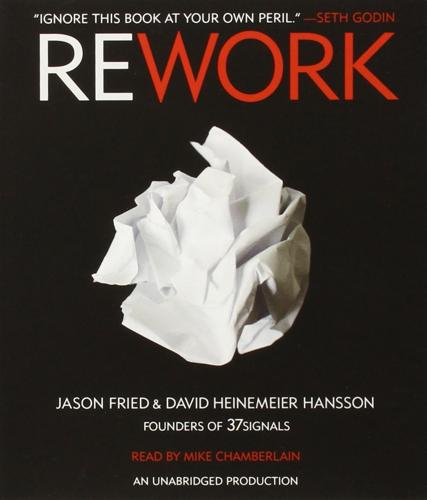
Rework
by
Jason Fried
and
David Heinemeier Hansson
Published 9 Mar 2010
For years, major bicycle brands focused on the latest in hightech equipment: mountain bikes with suspension and ultrastrong disc brakes, or lightweight titanium road bikes with carbon-fiber everything. And it was assumed that bikes should have multiple gears: three, ten, or twenty-one. But recently, fixed-gear bicycles have boomed in popularity, despite being as low-tech as you can get. These bikes have just one gear. Some models don’t have brakes. The advantage: They’re simpler, lighter, cheaper, and don’t require as much maintenance. Another great example of a product that is succeeding by underdoing the competition: the Flip—an ultrasimple, point-and-shoot, compact camcorder that’s taken a significant percentage of the market in a short time.

Against Everything: Essays
by
Mark Greif
Published 5 Sep 2016
Then scarves were worn as bandannas, as when Mary-Kate Olsen sported one, like a cannibal Pocahontas, hungry enough to eat your arm. There were also some practical technological withdrawals. As CDs declined, LP records gained sales for the first time in two decades—seemingly purchased by the same kids who had three thousand songs on their laptops. The most advanced hipster youth even deprived their bikes of gears. The fixed-gear bike now ranks as the second-most-visible urban marker of hip, and not the least of its satisfactions is its simple mechanism. Above all, the post-2004 hipster could be identified by one stylistic marker that transcended fashion to be something as fundamental as a cultural password: jeans that were tight to the calves and ankles.
…
One glimpses behind them the bike messengers, straight-edge skaters, Lesbian Avengers, freegans, enviro-anarchists, and interracial hip-hoppers who live as they please, with a spiritual middle finger always raised. And hipster motifs and styles, when you dig into them, are often directly taken from these adjacent countercultures. The fixed-gear bike came from bike messengers and the anarchist culture of groups like Critical Mass and Bikes Not Bombs. Hipster approval of locavore food (because local cheeses and grass-fed beef are expensive, rare, and knowledge-intensive) brings elitism to the left-environmentalist campaign for deindustrialized agriculture.

Golden Gates: Fighting for Housing in America
by
Conor Dougherty
Published 18 Feb 2020
If she was going to build a movement with legs and secure herself more stable employment and a wider swath of donors, she needed to build a real nonprofit with a clearly defined mission that she could pursue and fundraise around. For this she teamed up with a fellow activist named Brian Hanlon, who, like Sonja, had moved to the Bay Area after dropping out of grad school. Brian was an unapologetic hipster who had a beard and wore skinny jeans and was particular about natural wine and fixed-gear bikes. He’d gotten involved in housing via the typically San Francisco route of going to eviction protests and marching next to people who held signs that said things like “Tech = Death.” Then he got into a bunch of disputes with his fellow protestors and the San Francisco Tenants Union over his belief that new development was good and renters’ groups were misguided for fighting it, after which he started complaining to friends about his frustration that the left only knows how to critique and conduct purity tests.
…
That bill was called SB 167, and it was a law that would update the Housing Accountability Act in such a way as to make it easier for Sonja and him to sue cities. By now, Sonja was well on her way to losing the case against Lafayette, and Brian, newly emancipated from his job at the Forest Service after being hired as CaRLA’s second full-time employee, was spending a goodly amount of his time riding the train from Oakland to Sacramento with a Japanese fixed gear that he called Sparkle Pony. In terms of the actual text, 167 didn’t change the Housing Accountability Act all that much, but by changing words like “substantial” to “preponderance,” it would make it far harder for cities to beat CaRLA in the future. It also imposed harsh fines on cities and forced them to pay the other side’s lawyers’ fees if they got sued for downzoning a project and lost, which was intended to cow cities into not putting up a fight.
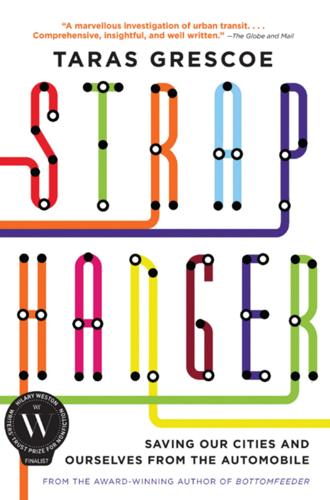
Straphanger
by
Taras Grescoe
Published 8 Sep 2011
The Gold Line is cheap, comfortable, and because cross traffic is held back to let it pass, very fast. It is hard to imagine why anybody who had the choice would prefer to drive. At Atlantic Square in Monterey Park, I got off with the train’s only remaining passengers, two teenage Latino hipsters, who had wheeled their immaculate fixed-gear bikes onto the train at Mariachi Plaza. The end of the line was a no-man’s-land, its highlights a McDonald’s drive-thru and a Pep Boys auto parts store—a landscape for drivers, not walkers. Fortunately, I was in East L.A., where great Mexican food is never far. Spying a taco stand in a strip mall, I scampered across two lanes of traffic toward Manny’s El Loco Restaurant.
…
In Copenhagen, of course, bicycle paths are physically separated from the road, and the sheer mass of cyclists makes for safety in numbers; fewer than one in ten cyclists wear helmets. In my hometown, Montreal, where cyclists are vastly outnumbered by drivers, I often wear a helmet in the summer, and always in the winter. † “Fixies” are lightweight, fixed gear bikes, often without brakes, popular among messengers in American cities. Vehicular cyclists disdain bike lanes and subscribe to the suicidal credo that bicycles should act like cars, claiming entire lanes on busy streets. 6. Fools and Roads Moscow, Russia Why the modernization of the Soviet Union started with the hanging of chandeliers beneath the earth I didn’t know.

Goodbye, Things: The New Japanese Minimalism
by
Fumio Sasaki
Published 10 Apr 2017
The qualities I look for in the things I buy are (1) the item has a minimalist type of shape, and is easy to clean; (2) its color isn’t too loud; (3) I’ll be able to use it for a long time; (4) it has a simple structure; (5) it’s lightweight and compact; and (6) it has multiple uses. My choice of a bicycle then became simple. I looked for a fixed-gear bike with a plain silver, raw finish, the kind of color that looks slightly rusty to begin with. A classic horizontal frame that wouldn’t go out of style. I didn’t need the name of a fancy brand on the frame. The only bicycle that met my criteria was one sold by Focale 44, so it took no time to decide.
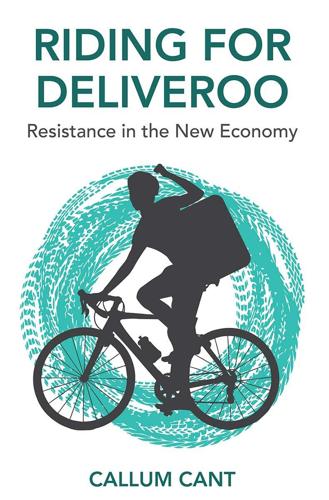
Riding for Deliveroo: Resistance in the New Economy
by
Callum Cant
Published 11 Nov 2019
Some people were bigger bike nerds than others, and they tended to dish out advice to those of us with less of a clue. Somebody helped me align my back brakes so that the brake blocks lasted longer, and I helped somebody else tighten their cables. We weren’t the kind of couriers who wore odd-shaped cycling caps and rode fixed gear bikes. All the previous examples of successful organizing I knew of, such as the IWGB courier branch, or those who organized with the Industrial Workers of the World (IWW) in Chicago in the early 2000s, had relied on a subcultural courier community to create a sense of solidarity.3 Workers knew each other because they had all participated in these mad cross-city courier races, gone to the same pubs, used the same bike shops, and been part of a common social scene.
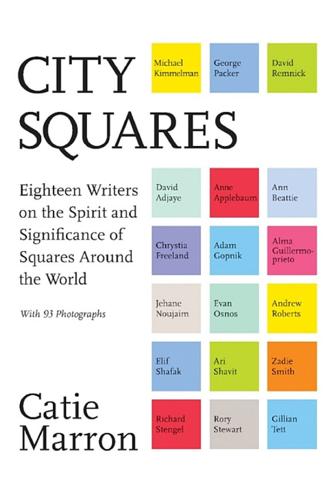
City Squares: Eighteen Writers on the Spirit and Significance of Squares Around the World
by
Catie Marron
Published 11 Apr 2016
He got it paved, and then he installed rows of upward-facing lights that made the alley look like a boardwalk. He invited in restaurateurs with the kind of international cuisine he wanted to promote—first a Spanish restaurant and then a Greek place. Elderly locals rented their front rooms to shops selling vintage clothing, ironic T-shirts, and stylish fixed-gear bicycles. The hutong even welcomed the first tanning salon I’d seen in China, a country where most people avoid appearing as if they work outside. When I had arrived in the neighborhood, Liu’s alley contained only one business, a café. Two years later, it had seventy-eight businesses, according to the local paper, which had sent a reporter to assess what it called “the city’s newest trendy hangout.”
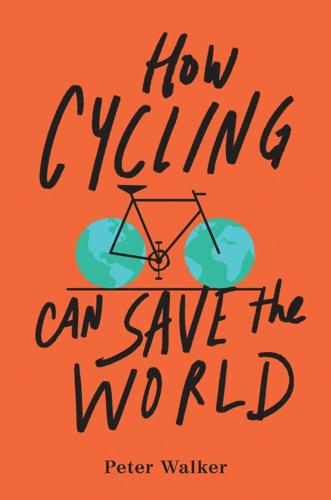
How Cycling Can Save the World
by
Peter Walker
Published 3 Apr 2017
An element was possibly to present myself with an inescapable daily physical challenge. “You feel let down by your body?” went the half-heard internal voice. “Now you’re relying on it to pay the rent.” These days courier fashion is a staple in style magazines—the tattoos, the single rolled-up trouser cuff, the fixed-gear bike. But this was an era when the trade was generally populated by misfits, by greasy-fingered, unsocialized types who got anxious if they had to stay indoors for more than ten minutes. Even amid this world of slight oddballs, I stood out, mainly because, knowing next to nothing about cycling, I had kitted myself with an absurdly impractical and clunky mountain bike, weighing about as much as a small moped.
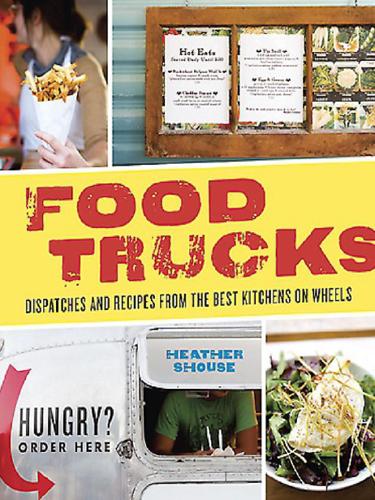
Food Trucks: Dispatches and Recipes From the Best Kitchens on Wheels
by
Shouse, Heather
Published 19 Apr 2011
Every few minutes another crew of buzzed hipsters staggers into the Portland food truck “pod” known affectionately as Cartopia, claiming a spot at a picnic table after making the rounds to the seven mobile eateries ringing the lot. Raven-haired rol er derby girls weave through the crowd on skates, earning the attention of a gang of bike messenger types, the kind that wear heavy chain-link locks as belts and leave their pant legs rol ed up long after they’ve hopped off their fixed-gear bikes. Scoping goes hand in hand with eating here, and for the under-forty set that prefers whiskey to wine, Johnny Cash to Coldplay, and DIY to ING, there’s no better place for either. Among this hourly wage crowd of waitresses, thrift store cashiers, and record shop stockers, local musicians and artists blend in seamlessly.
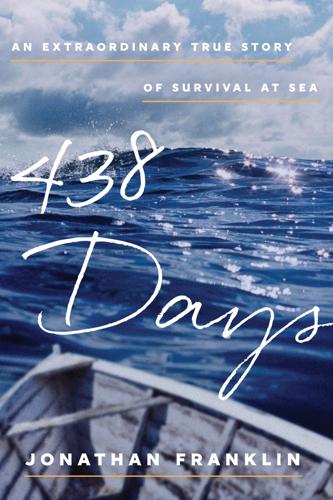
438 Days: An Extraordinary True Story of Survival at Sea
by
Jonathan Franklin
Published 17 Nov 2015
Alvarenga and his mate packed their boat with the cadence and confidence of men on autopilot. Among the coastal fishermen, the respective roles of captain and mate are marked with a military-style discipline and respect for rank. Captain Alvarenga, anchored at the stern, would run the motor and steer while Ray Perez, his skinny twentysomething mate, dashed about the boat fixing gear, setting lines and organizing equipment. On land, Ray was a wild outlaw who raised havoc with colleagues and the law. But at sea he was a loyal companion and a tireless worker, and the two men filled the shifts with raucous laughter. Loading the boat was a two-hour process and involved over a thousand pounds of equipment, including 70 gallons of gasoline, 16 gallons of water, 100 pounds of sardines for bait, 700 hooks, miles of line, a harpoon, 3 knives, 3 bailing buckets, a cell phone (in a plastic bag to avoid seawater), a GPS tracking device (not waterproof), a two-way radio (battery half charged), several wrenches for the motor and 200 pounds of ice.
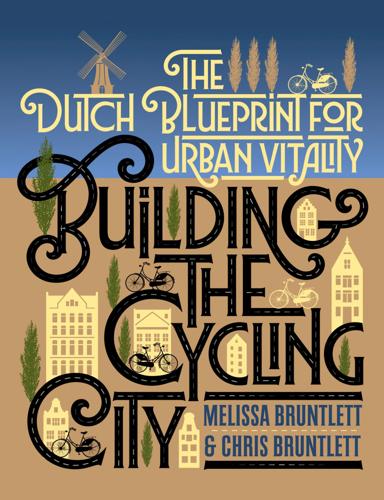
Building the Cycling City: The Dutch Blueprint for Urban Vitality
by
Melissa Bruntlett
and
Chris Bruntlett
Published 27 Aug 2018
That daily puzzlement eventually inspired a career change, with Sluijsmans dedicating his energy and passion towards cargo bikes. “At a certain point, I started to make a living by cycling, and one of the first things I did was start a bike messenger company,” he recalls. “But I wasn’t the type to ride a fixie [i.e., a fixed-gear bicycle, popular with messengers] with a bag across my chest, and I felt cargo bikes could be used to do the transport instead.” Serendipitously, the local SPAR—a grocery chain—had brought in a cargo bike for deliveries as a part of a pilot for the Province of Gelderland, but unfortunately, due to changes to the store’s physical space, the grocer was no longer able to get it into the store.
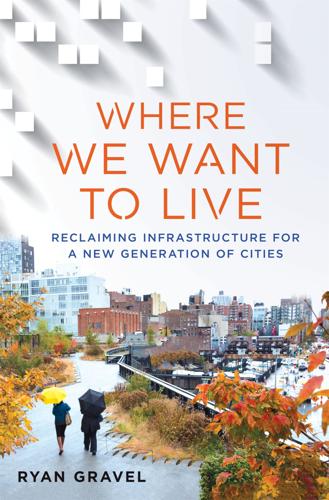
Where We Want to Live
by
Ryan Gravel
Published 2 Feb 2016
It represents exactly the kind of urban reinvention that so many Americans are craving and trying to replicate in their own hometowns. And while questions of equity, access, affordability, and diversity are increasingly urgent here, it seems hard to argue that this kind of reoccupation is worse than just watching the city fall apart. It’s also important to remember that Williamsburg’s bearded, handcrafted, fixed-gear story is only the latest yarn in Brooklyn’s cultural tapestry, and the hipster aesthetic found here or in Corktown is not a required ingredient for urban innovation. Notwithstanding its skyrocketing rents and new waterfront towers down by the East River, Williamsburg’s disposition for local businesses, products, people, and stories translates beyond style and reflects a fitting model for the forlorn downtowns and industrial districts of any small town or city.
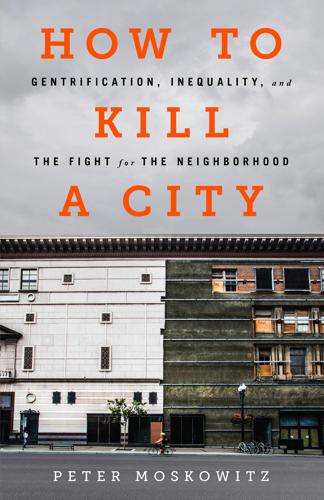
How to Kill a City: The Real Story of Gentrification
by
Peter Moskowitz
Published 7 Mar 2017
San Francisco has decided not to bite the hand that feeds it, even if that hand is also signing its eviction papers. I met Hugo Vargas, a sixteen-year-old who grew up in the Mission, when I was wandering around the neighborhood one day. Hugo was volunteering at a local community center and agreed to show me around. He grabbed his fixed-gear bike and walked me down Mission Street, past the dollar stores and fresh fruit stands and the smattering of hipster-filled coffee places and bars. Hugo told me about his parents: one’s a barista, the other’s a cook, and both work at Blue Bottle Coffee, one of the hippest and most expensive coffee chains in the city.

The Airbnb Story: How Three Ordinary Guys Disrupted an Industry, Made Billions...and Created Plenty of Controversy
by
Leigh Gallagher
Published 14 Feb 2017
He says he started hosting in 2010—“when there were twelve people in the Airbnb office”—and he’s ridden the wave of Airbnb and seen the members of its community grow more sophisticated. In his early days, he says, “nobody knew what to do, what the experience was. ‘Are you the psycho killer? Or am I the psycho killer?’” He draws young, tech-savvy travelers and invests in things that appeal to them: twelve fixed-gear bicycles, video-game systems—“anything that will attract our target group, because then our lives are easier.” He charges from seventy to ninety-nine dollars per night and accrues some intangible benefits, too: his last two girlfriends have been Airbnb guests he rented to. Let a Million Pillow-Fluffers Bloom The growth of the Airbnb host community has also fueled a robust cottage industry of start-ups offering services to support them, everything from linen changing, pillow fluffing, turndown service, key exchanges, property management, minibar services, tax compliance, data analytics, and more.

Stealth
by
Peter Westwick
Published 22 Nov 2019
Foster wondered whether a big model plane, equipped with a camera and sensors, and taking advantage of new miniature electronics for a lightweight radio control, might help. The result was the miniature remotely piloted vehicle, or Mini-RPV. In effect, the RPVs were the predecessors of today’s camera-bearing drones (or UAVs, as some know them). An early model built by Philco-Ford in 1972 was a propeller-driven, fixed-gear airplane that looked like a boxy, scaled-down Cessna, with a 12-foot wingspan, a weight of about 70 pounds, and a price tag of $10,000, almost all of that for high-tech stability and control electronics. The weight included a payload of cameras, infrared sensors, or laser target designators.5 Engineers soon discovered a surprising side benefit: the Mini-RPV’s relatively small size, together with its plastic material and judicious shaping, made it much less visible to radar.

Streetfight: Handbook for an Urban Revolution
by
Janette Sadik-Khan
Published 8 Mar 2016
But even when I’ve done nothing wrong, I can see that the fear and instinct for collective punishment are no less real. Bike riders exist on a totally different frequency, moving at speeds seemingly incompatible with people who drive. They’re cheaters, cutting the line in front of law-abiding people behind the wheel, running lights as if the rules don’t apply to them. The stereotypical urban biker rides a fixed-gear bike with a lock and chain slung across his One Less Car T-shirt, like a bandolier. A regular two-wheeled, holier-than-thou, rolling lifestyle protest. And they seem so damn smug about it. A pedestrian killed by a cyclist is guaranteed front-page news status for days on end in New York City, with saturation coverage and outrage.
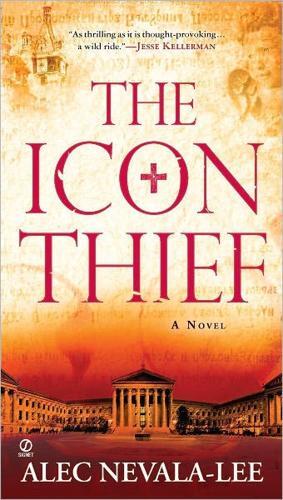
The Icon Thief
by
Alec Nevala-Lee
Published 1 Mar 2012
“Very good.” Maddy handed her an envelope. It contained a hundred dollars in cash, leaving her with something less than seventy in her checking account. “For your trouble. Buy yourself a real bike.” Tanya accepted the honorarium with a smile. They parted ways at the corner, where Tanya climbed onto a fixed gear bicycle and Maddy took the train back to work. As she rode, she turned her friend’s argument over in her head, concluding that it was highly unlikely. Collectors didn’t buy art for political reasons. They bought it out of vanity, greed, and, occasionally, genuine aesthetic pleasure. The idea that anyone would pay eleven million dollars for a painting because of a secret revolutionary tradition struck her as inherently absurd.
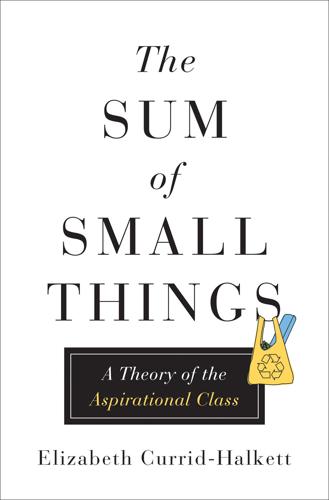
The Sum of Small Things: A Theory of the Aspirational Class
by
Elizabeth Currid-Halkett
Published 14 May 2017
Yet for this drolly ironic subculture, information about what is cool or in the know is all they have and thus they too engage in nonpecuniary means of inconspicuous consumption that allow them to define their social position by reading and referencing obscure blogs and Twitter feeds, carrying NPR canvas bags, and riding fixed-gear bicycles. They drink hemp milk, not dairy; drive old Mercedes revamped to run on veggie oil instead of second-hand Honda Accords; buy fast food at food trucks rather than McDonald’s; even though these goods are more or less comparable in price. (Incidentally, McDonald’s now serves kale salads, surely a response to the new emphasis on healthy eating championed by both health professionals and the aspirational class.)
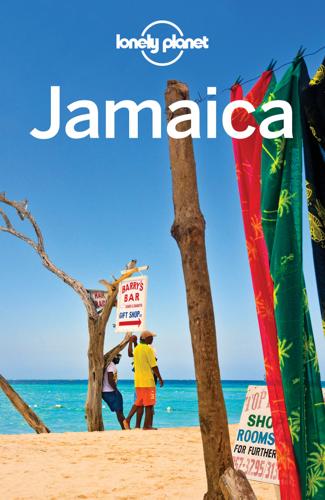
Lonely Planet Jamaica
by
Lonely Planet
For anything more serious, you should consider bringing your own mountain or multipurpose bike. You will need sturdy wheels to handle the potholed roads. Check requirements with the airline well in advance. Remember to always have, at a minimum, a flashlight for the front of your bike and reflectors for the rear. If you’re in the fixed-gear bicycle camp, note that Jamaica’s many hills and unpredictable traffic make riding a ‘fixie’ extremely difficult. Good online resources include the Jamaican Cycling Federation (www.jamaicacycling.com). Diving & Snorkeling Diving has been a part of the Jamaican tourist landscape since the late 1960s, when the first facilities opened in Montego Bay, even then the tourism capital of the island.

Among the Braves: Hope, Struggle, and Exile in the Battle for Hong Kong and the Future of Global Democracy
by
Shibani Mahtani
and
Timothy McLaughlin
Published 7 Nov 2023
On a balmy June day—a luxury even in Britain’s notoriously fickle summer—visitors flocked to the bars and restaurants along the riverside, enjoying pints of beer and ice cream cones as airplanes flew overhead, en route to Heathrow Airport. Residents in light Barbour jackets walked their pedigreed dogs along the river path; others zoomed past in fixed-gear bikes or rented punts for a spin on the river. Mick Jagger, Angelina Jolie, and Brad Pitt had all called Richmond home at one point. It was here, in a cozy minimalist studio decorated in soft hues of gray and white, that Finn Lau—far from the rural New Territories where he’d grown up and from the perceived failures of his school years—was typing an epistle.

The Village Effect: How Face-To-Face Contact Can Make Us Healthier, Happier, and Smarter
by
Susan Pinker
Published 30 Sep 2013
To weather the inevitable indignities of advancing age, geographic proximity to close friends and confidantes is what really matters, according to research by Teresa Seeman and Lisa Berkman.15 Indeed, what the data tell us is that the elderly, and especially widowed people, live longer in places such as Villagrande or Boca Raton—where there are lots of residents of the same age with the same concerns—than they would if they lived among Brooklynites pushing baby strollers and riding fixed-gear bikes.16 Zia Teresa reminded me of my grandmother, who at eighty, as we bent our heads over my Russian homework, told me that she might look like an old woman to other people. But she continued to see the world through the eyes of her younger self. Teresa was able to tap into her younger persona by virtue of living so close to relatives and friends who had known her for decades, in the place where she had raised her six children.
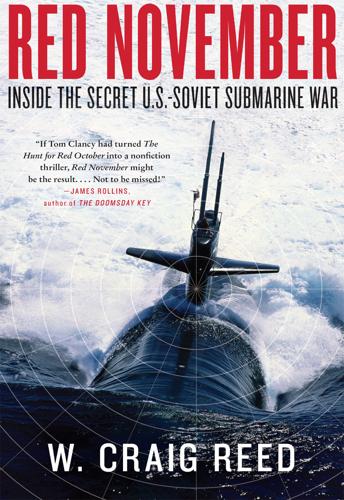
Red November: Inside the Secret U.S.-Soviet Submarine War
by
W. Craig Reed
Published 3 May 2010
Rule took the jabbing from Parche’s crew in stride and got along with most of them, who also lived in the wood-framed barracks at an old munitions depot near the docks. Over the next several months, he shouldered a torpedoman’s workload on the Seawolf alongside the team’s leading petty officer. He helped load MK-37 torpedoes, scrub decks, fix gear, and stow several Mobile Submarine Simulators (MOSS) on board, which Rule hoped they’d never need to use. Subs shot MOSS from their torpedo tubes as decoys when the Soviets were trying to prosecute them. At night, Rule migrated back to the Horse and Cow, where Don Langaliers demonstrated his secret weapon.
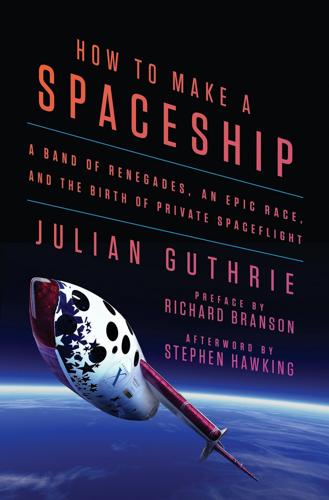
How to Make a Spaceship: A Band of Renegades, an Epic Race, and the Birth of Private Spaceflight
by
Julian Guthrie
Published 19 Sep 2016
Erik was thirty-seven years old and would spend the flight in a leather seat, one of four in the plane. Erik had five ham sandwiches, his smeared with mustard. It was Erik’s first trip to Europe, as it had been for his grandfather. At this point, Erik had already flown three hundred hours in the Lancair 300 and knew its quirks and handling qualities. It was a fast, fixed-gear aircraft with controls that were nimble at lower speeds and stiffer at higher speeds. He had flown cross-country, dodging storms, icing, and turbulence. A high-tech, state-of-the-art Mission Control was set up in the St. Louis Science Center with Gregg at the helm. He would be there from takeoff to landing.

Bleeding Edge: A Novel
by
Thomas Pynchon
Published 16 Sep 2013
Except Marvin has an uncanny history of always showing up with items Maxine knows she didn’t order but which prove each time to be exactly what she needs. This is the first time she’s ever seen him in the daylight hours. His shift used to begin at nightfall, and from then till dawn he’d be out on his orange fixed-gear track bike delivering donuts, ice cream, and videotapes, guaranteed to arrive within the hour, to the all-night community of dopers, hackers, instant-gratification cases who thought the dotcom balloon would ascend forever. “It was all these ritzy neighborhoods up here,” is Marvin’s theory, “I knew the minute we started deliverin north of 14th Street it was the beginnin of the end.”
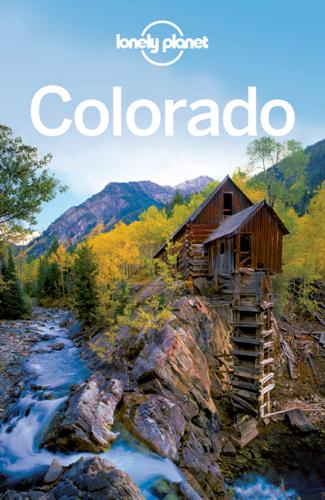
Colorado
by
Lonely Planet
Aspen Saturday Market MARKET ( 970-429-2687; S Hunter St, E Hopkins Ave & E Hyman Ave; 9am-3pm mid-Jun–Oct; ) This market blooms on Saturday mornings. It’s more than just a farmers market, though self-caterers can grab their organic fruits and veggies, craftsmen cheese, and naturally and locally grown beef, bison and elk here. It also has tons of crafts, including handmade soap, silver jewelry and fixed-gear bikes built with vintage frames. The market runs in a U-shape from Hyman to Hopkins on Hunter before turning down both Hyman and Hopkins to Galena. Information Internet Access Pitkin County Library ( 970-429-1900; www.pitcolib.org; 120 N Mill St; 10am-9pm Mon-Thu, 10am-6pm Fri & Sat, noon-6pm Sun; ) Another in a series of fantastic public libraries in the state of Colorado.